Tucson is known for its year-round sunshine and vibrant cultural scene. Here you’ll discover a desert oasis brimming with unique attractions, rich history, and breathtaking natural wonders.
Whether you’re a Phoenix local or visiting from out of town, Tucson is the perfect day trip or weekend getaway. Keep reading to discover the best things to do in Tucson, Arizona!
*Disclosure: This post contains affiliate links. If you make a purchase through the link provided, we will receive a small commission at no extra cost to you. We really appreciate your support!
10 Fun Things to do in Tucson
Table of Contents
- 1. Take a hike at Saguaro National Park
- 2. Visit the Arizona-Sonora Desert Museum
- 3. Shop and eat at Mercado San Agustin
- 4. Hike to the top of Picacho Peak
- 5. See the colorful homes at Barrio Viejo
- 6. Admire the architecture at Tucson’s Miracle Mile
- 7. Eat dinner at a lavender farm
- 8. Visit the historic San Xavier del Bac Mission
- 9. Visit the obscure Biosphere 2
- 10. See the planes at the Pima Air and Space Museum
1. Take a hike at Saguaro National Park
No trip to Tucson would be complete without experiencing the captivating beauty of Saguaro National Park.
Here you will find a high concentration of saguaro cactus, unlike anything you’ve ever seen before.

In fact, there are over 2 million saguaros. This is almost double the amount since 1994 when it was first designated as a national park.
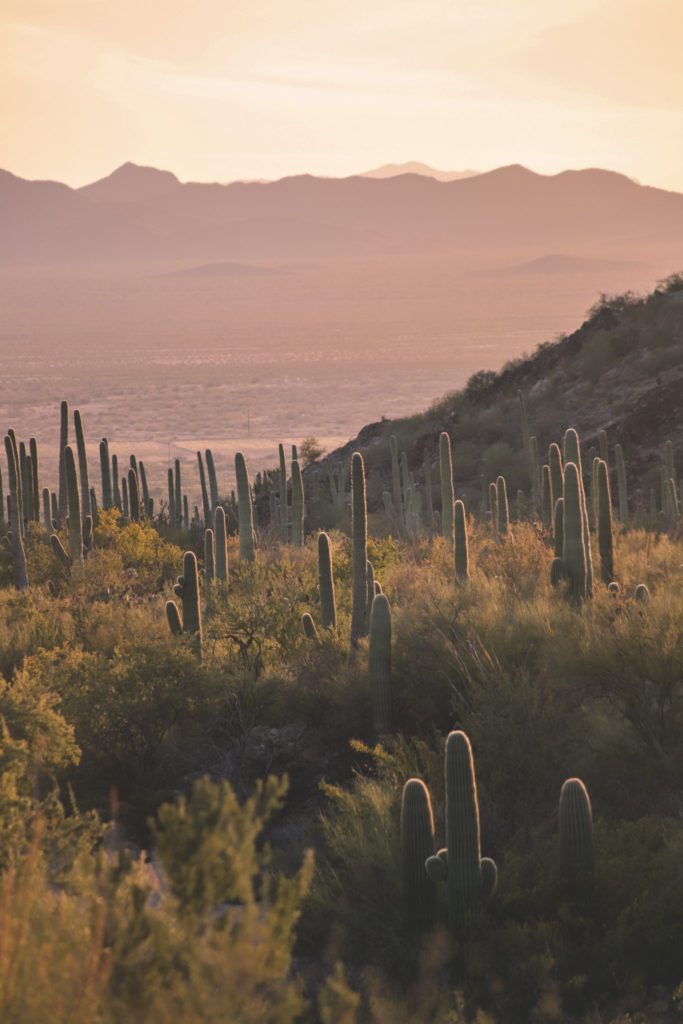
This is mind-blowing, especially considering that saguaros grow only 1-2 inches in their first 8 years of life.
Saguaros start producing flowers after about 35 years, and the first branches don’t even form until they are about 50-70 years old. It can sometimes even take up to 100 years!
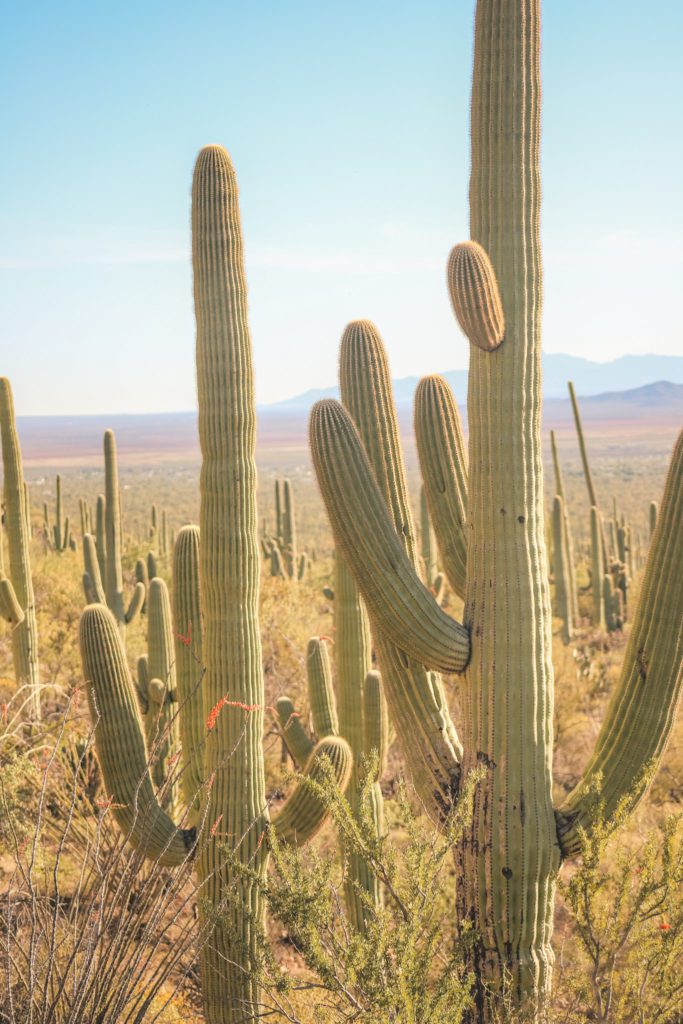
The average life span of a saguaro cactus is 150-175 years, but some have lived over 200 years.
With that in mind, it will give you a greater appreciation of just how old these saguaros are and how long it took for this landscape to look how it does today.
Saguaro National Park is massive. It covers 143 square miles and is divided into two different districts, East and West.
The West is the most popular one to visit as it is the easiest to access due to its close proximity to I-10.
The park offers a unique desert landscape, but you really only need a few hours to explore it since the views look pretty much the same throughout the entire park.
I would recommend visiting in the evening to experience the beauty of the desert at golden hour and sunset.
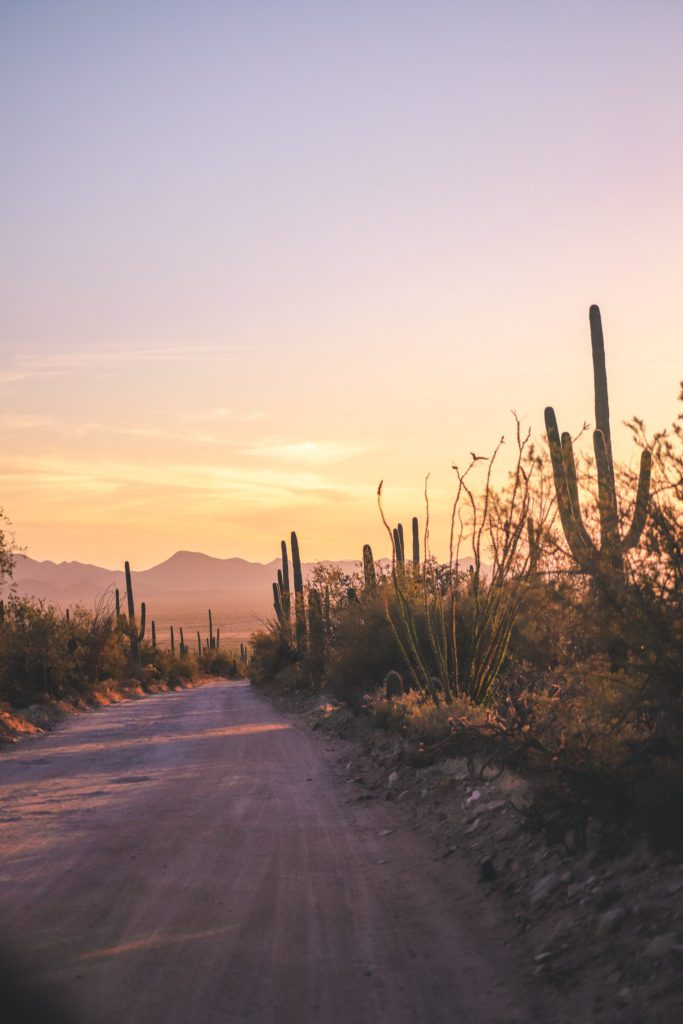
Start your visit with a stop at the visitor center before it closes, then take a scenic drive along the nearby Bajada Loop Drive.
This 6-mile dirt road weaves between the towering saguaros with a few trailheads and viewpoints that you can stop at along the way.
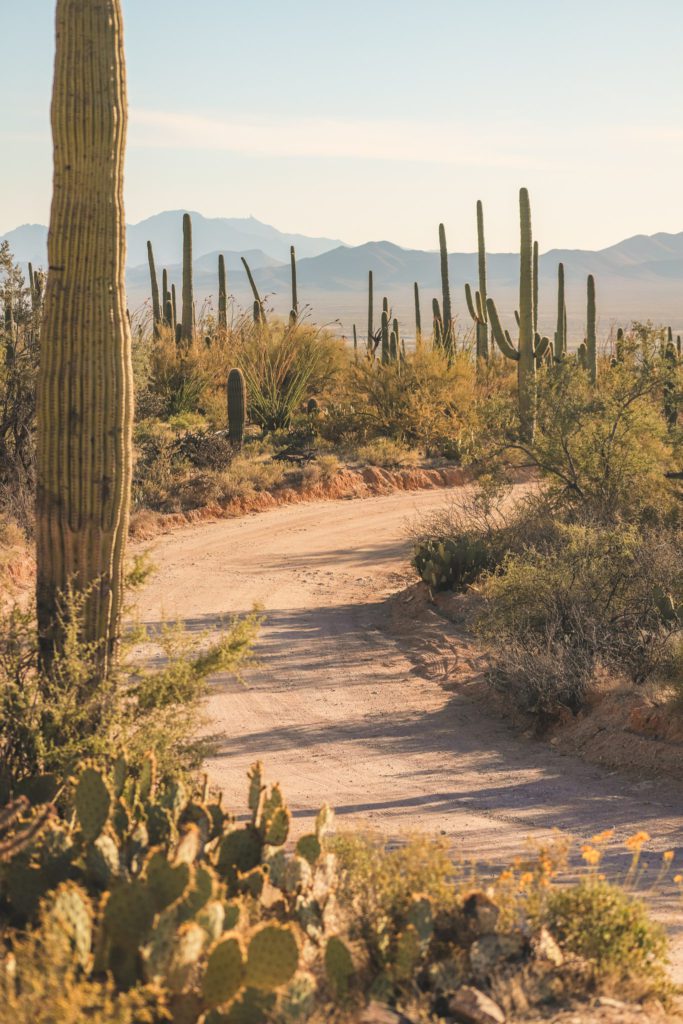
Keep in mind that this is a one-way road for the last 5 miles, so you can’t turn around after the first mile.
The graded road is passable by all vehicles, but it is a bit bumpy and would be more comfortable with a high-clearance vehicle.
I would also recommend picking one or two hikes to do in the park.
The Hugh Norris Trail is off the Bajada Loop Drive and is a great introduction to the park.
The trail leads through the dense concentration of saguaros and offers panoramic views.
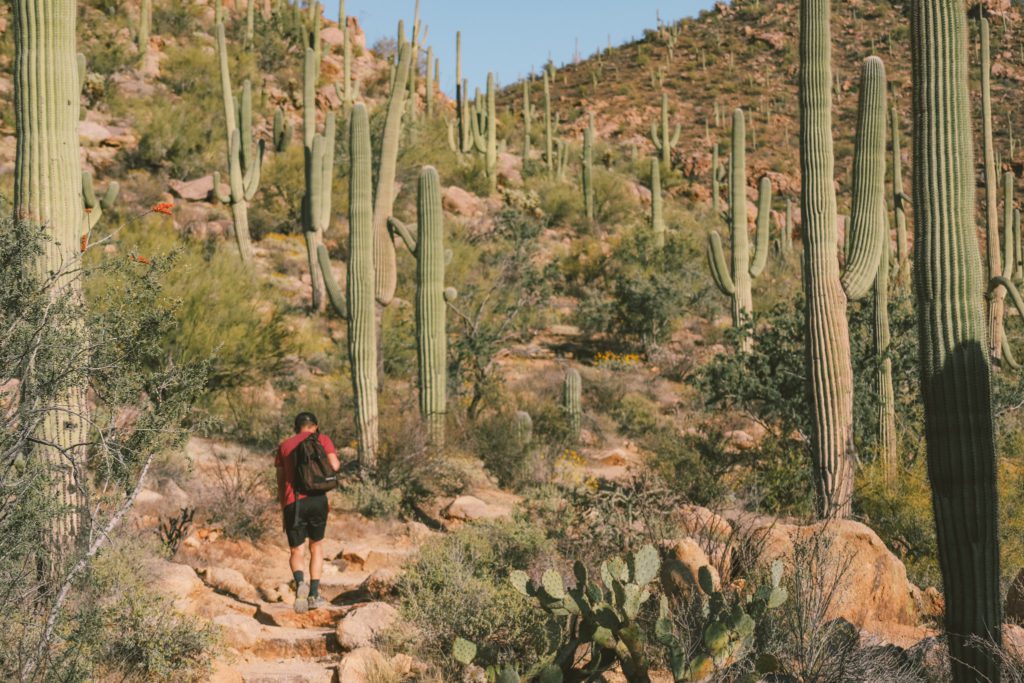
The whole trail is 8.9 miles out and back, but I would recommend just hiking a portion of it to get a taste of all that the park has to offer.
The Valley View Overlook Trail is just a little further up Bajada Loop Drive and is the perfect sunset hike.
The 0.8 mile out-and-back trail leads to a viewpoint that overlooks the valley dotted with thousands of saguaros.
There is something so breathtaking about seeing a sea of saguaros silhouetted against the setting sun.
The park is open from sunrise to sunset so just be sure to exit before dark. On your way back to Tucson, make a stop at the Gates Pass Scenic Overlook for a great sunset view.
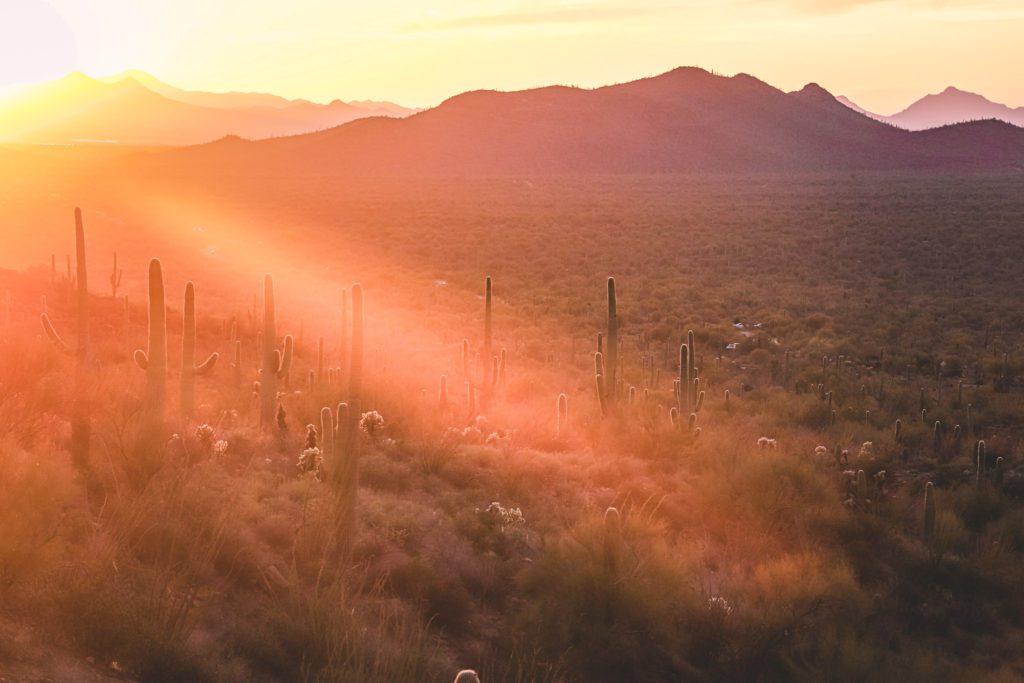
The Gates Pass Trailhead is just up the road and is another great spot to watch the sun sinking below the horizon.
If you are interested, it would be helpful to take a self-guided audio tour of the park to learn more about the history and find other recommended stops.
Another fun way to experience the park is on an E-bike Tour.
2. Visit the Arizona-Sonora Desert Museum
The Arizona-Sonora Desert Museum is located only a few minutes from the west entrance of Saguaro National Park.
This unique outdoor museum combines the elements of a zoo, botanical garden, aquarium, and natural history museum.
It provides a comprehensive experience of the region’s unique desert ecosystem including the desert wildlife and native plants.
Some of the highlights include Cat Canyon where you’ll see bobcats, ocelots, and foxes in a natural setting.
The Mountain Woodland habitat is where you’ll find mountain lions, mule deer, and even black bears.
You’ll also find a variety of reptiles inside the climate controlled Reptile, Amphibian, and Invertebrate Hall.
You also won’t want to miss the Hummingbird Aviary, Warden Aquarium, and the many activities and experiences offered throughout the day.
The trails throughout the zoo are lined with manicured desert gardens and offer expansive views over the desert.
It is definitely one of the most beautiful zoos that we have ever visited!
3. Shop and eat at Mercado San Agustin
For a taste of Tucson’s local flavors, head to Mercado San Agustin.
This modern food hall and open-air market is filled with local artisans selling handcrafted goods, delicious food vendors, and live entertainment.
You’ll also find some of the best Mexican food here at Mercado San Agustin.
Tucson boasts the “Best 23 Miles of Mexican food in the US”. It is also the first United Nations designated City of Gastronomy in the US.
This means that the restaurants must adhere to UNESCO standards. This includes locally sourcing the ingredients and showcasing the region’s indigenous foods with a unique twist.
Seis Kitchen is located at Mercado San Agustin and serves up the best handcrafted tacos and authentic Mexican dishes.
You can even watch them roast the green chiles over an open fire out back behind the restaurant.
The seating is outdoors in the courtyard where you’ll find string lights and live music often playing. It’s the perfect ambiance for a fun date night.
Be sure to also stop at La Estrella Bakery in Mercado San Agustin to sample some of the best Mexican Pan Dulce, including cookies, pastries, and sweet breads.
Here are a few more of the best places to eat in Tucson:
- The Parish: Indulge in southern comfort cuisine at one of Yelp’s top 100 restaurants.
- Barrio Bread: This local bakery serves the best homemade bread with desert heritage grains baked in every loaf.
- Mi Nidito: A favorite Mexican restaurant among locals and visitors alike. Bill Clinton even ate here!
- El Guero Canelo: Their iconic Sonoran hot dogs won the 2019 James Beard Foundation’s “America’s Classics Award” for the best Sonoran dogs.
- Barista del Barrio: Expect to wait in line for these bomb breakfast burritos, but they’re worth the wait!
- Downtown Kitchen + Cocktails: Order the Sonoran Chile & Squash Soup with salsa fresca and queso Oaxaca.
- Welcome Diner: Try the Mesquite-roasted Pima grits with homemade pimento.
4. Hike to the top of Picacho Peak
Picacho Peak is a prominent peak just outside of Tucson. It punctuates the landscape and can be seen for miles.
The trail leading to the summit of the peak is one of the most adventurous hikes in Arizona and one of our favorite things to do when spending a Weekend in Tucson.
It offers adrenaline-pumping cable climbs, sheer cliffs, narrow ridges, and breathtaking views.
To reach the summit of Picacho Peak, take the 2.8-mile out-and-back Hunter Trail located within Picacho Peak State Park.
This is an intense trail with an elevation gain of 2,112 feet. The trail starts out with a steady incline as you make your way up to the base of the cliffs.
After about 0.3 miles, you’ll reach the first small cable climb.
After about 0.5 miles you’ll come to an overhang where you can enjoy a little shade before continuing to the saddle.
The trail up to the saddle is kid-friendly and dog-friendly, but dogs are not allowed past the saddle and it is not recommended for kids under the age of 10 beyond this point either.
Once you reach the saddle, you’ll head down a steep trail with the help of metal railings before beginning the grueling ascent to the peak.
As you continue further up, the view keeps getting better.
The trail also becomes more intense with class 3 climbing cables, sheer drop-offs, and narrow ledges.
This hike is not recommended for the faint of heart or those with a fear of heights.
Although the trail is fairly short, it seems like it will never end and your legs will feel like jello.
However, once you reach the top, you’ll feel an immense sense of accomplishment as you take in the view for miles in every direction.
Plan for about 2 1/2-3 hours to complete the Picacho Peak hike.
I would also recommend bringing gloves as the cables can be quite rough on your hands.
The park is open from 5 am to 10 pm, but the trail closes at sunset. Admission to the park is $7 per vehicle.
There are no bathrooms at the trailhead parking lot, so be sure to use the restrooms near the entrance to the park.
The parking lot at the trailhead is fairly small so I would recommend arriving early to avoid the crowds and the heat of the day.
The best time to hike Picacho Peak is in the spring when the desert floor is carpeted in colorful wildflowers.
Avoid hiking in the summer when the temperatures reach dangerous levels.
For more hiking recommendations, see our guide 7 Awesome Hikes in Phoenix, Arizona.
5. See the colorful homes at Barrio Viejo
Barrio Viejo, which translates to the “old neighborhood”, is the historic heart of Tucson and is known for its colorful adobe homes.
Up until 1854, Tucson was a city in the Sonoran region of Mexico.
This particular area was home to a diverse community of local Mexicans as well as immigrants from countries such as the US, Europe, Africa, and Asia.
In the 70s and 80s, many of the homes and businesses in the area were bulldozed in the name of urban renewal.
The adobe buildings and homes in Barrio Viejo were spared and they are the only remaining 19th-century structures in Tucson.
Today, Barrio Viejo is actually believed to be the largest collection of 19th-century adobe buildings in the US.
The homes and buildings in this vibrant district have been preserved to reflect the city’s rich cultural heritage and architecture.
Take a stroll through the neighborhood to admire the architecture and pop into the shops and restaurants.
One of the best places to eat in Barrio Viejo is at Coronet. Here, you’ll find a restaurant, cafe, and craft cocktail bar all located within a historic 160-year-old adobe building.
The building was once the home of Clara Ferrin Bloom, one of Tucson’s early civic leaders.
6. Admire the architecture at Tucson’s Miracle Mile
Another great place to see unique architecture is at Miracle Mile, a commercial corridor that has been listed on the National Register of Historic Places.
This historic district is dotted with neon signs and mid-century roadside motels that give a nod to the city’s past.
7. Eat dinner at a lavender farm
You may be surprised to find a lavender farm in the middle of the desert, but you’ll find just that at the Life Under the Oaks Lavender Farm just outside of Tucson.
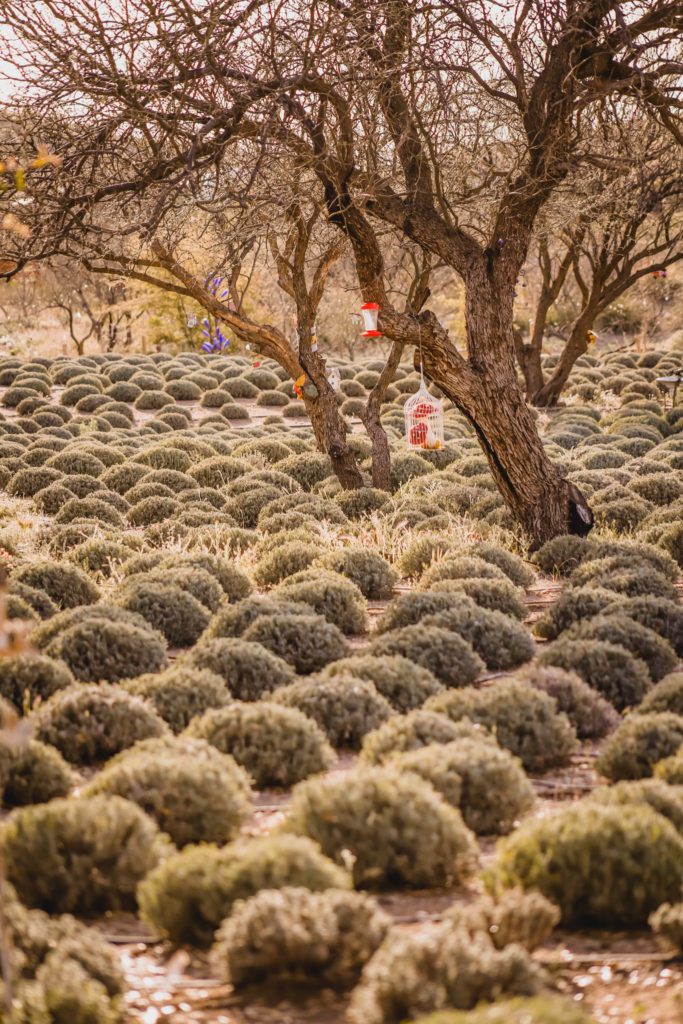
This small family-owned lavender farm is a little oasis surrounded by ancient oak trees and offers an escape from the desert.
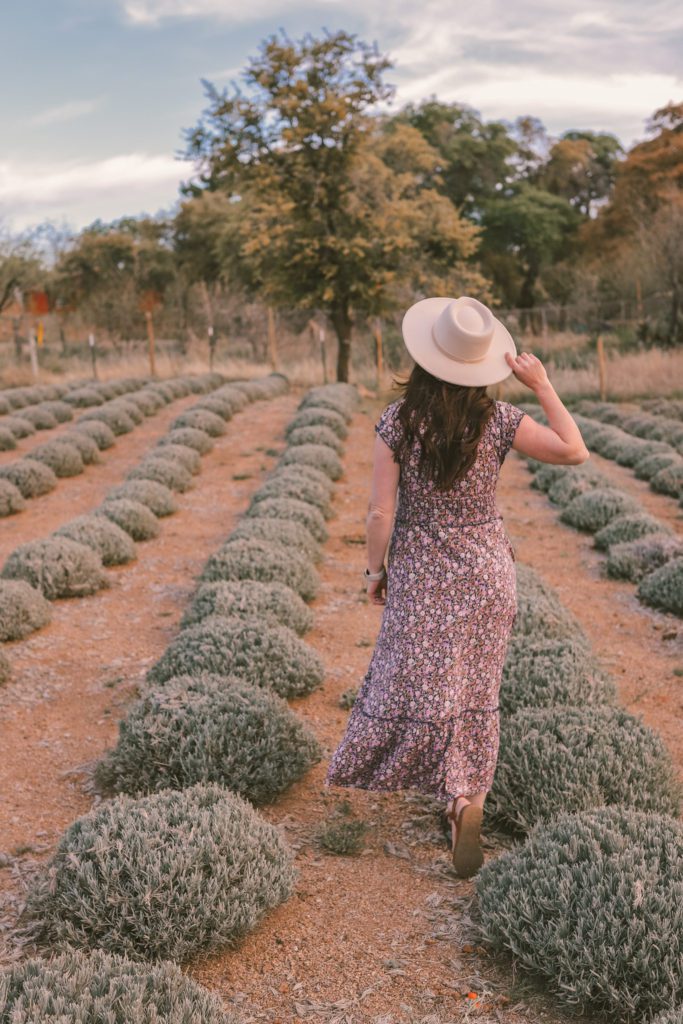
The farm is open year-round Wednesdays through Sundays from 8 am to 12 pm.
Visitors can walk through the rows of fragrant lavender and see the fun whimsical displays that are scattered around the farm.
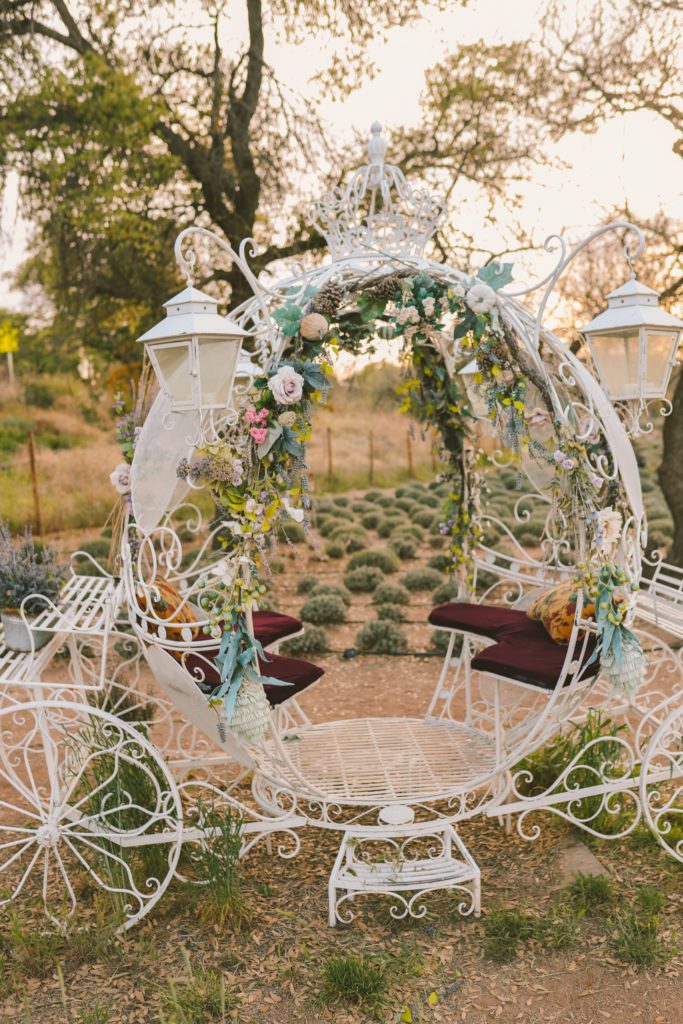
These unexpected eclectic displays make for great photo-ops.
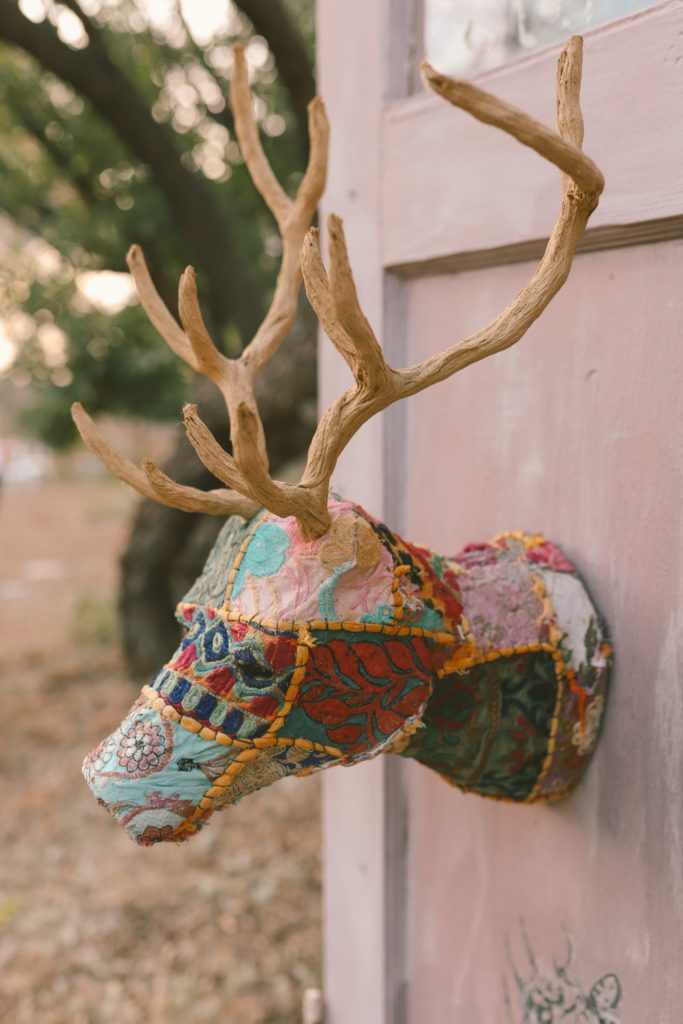
There is also a small petting zoo and kids play area.
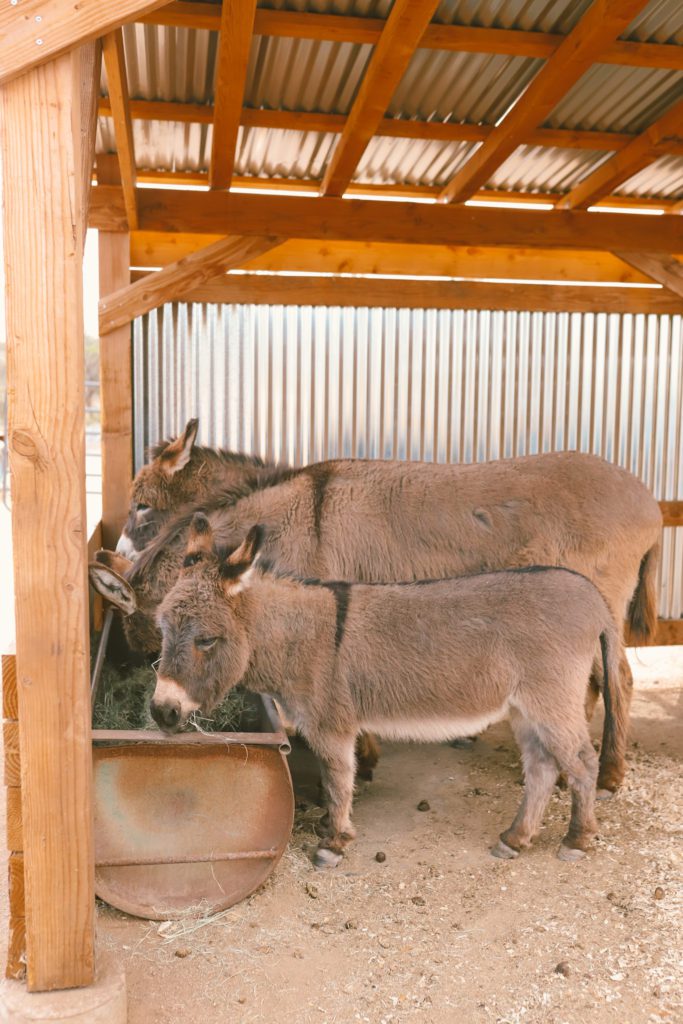
Visitors can even pre-order a picnic breakfast or lunch basket to enjoy at the farm.
The best time to visit is from late May to early July when the lavender is in full bloom.
Several events are held throughout the year as well. These include activities such as a lavender pumpkin pancake brunch in the fall, lavender wreath workshops, Mother’s Day tea, and more.
We attended a farm-to-table lavender-inspired dinner and it was a memorable date night.
The menu included lavender-infused dishes such as crostini with olive, lavender, and white truffle tapenade, chicken with honey sage and lavender, honey lavender glazed carrots, lavender dijon potato salad, and lavender lemon butter cake.
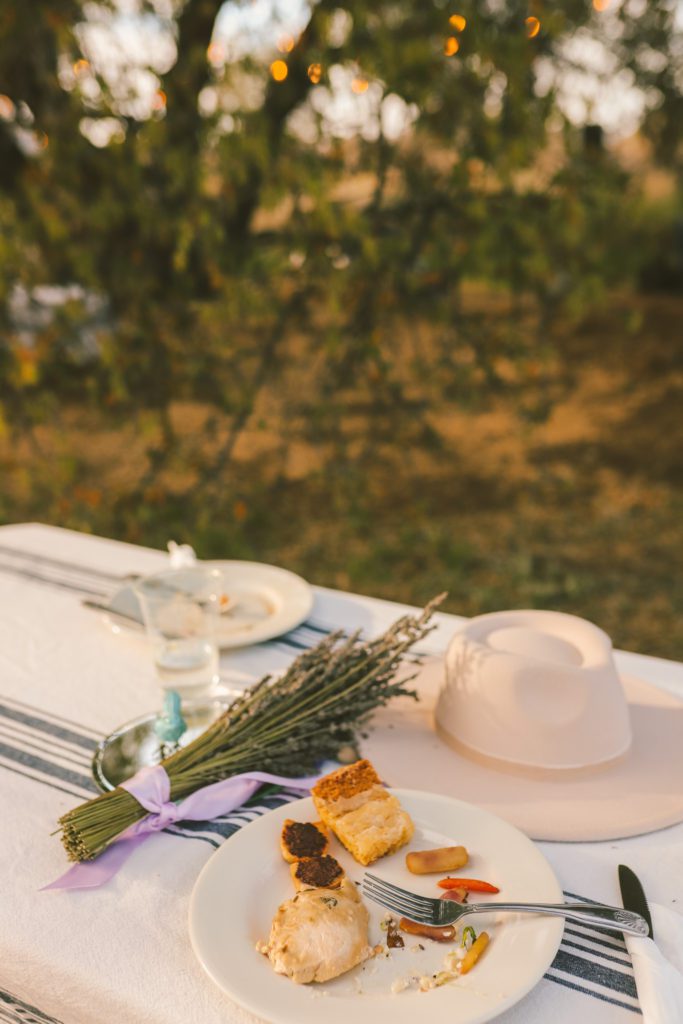
For the perfect ambiance, you can enjoy your meal on a picnic table under the shaded oak trees strung with lights.
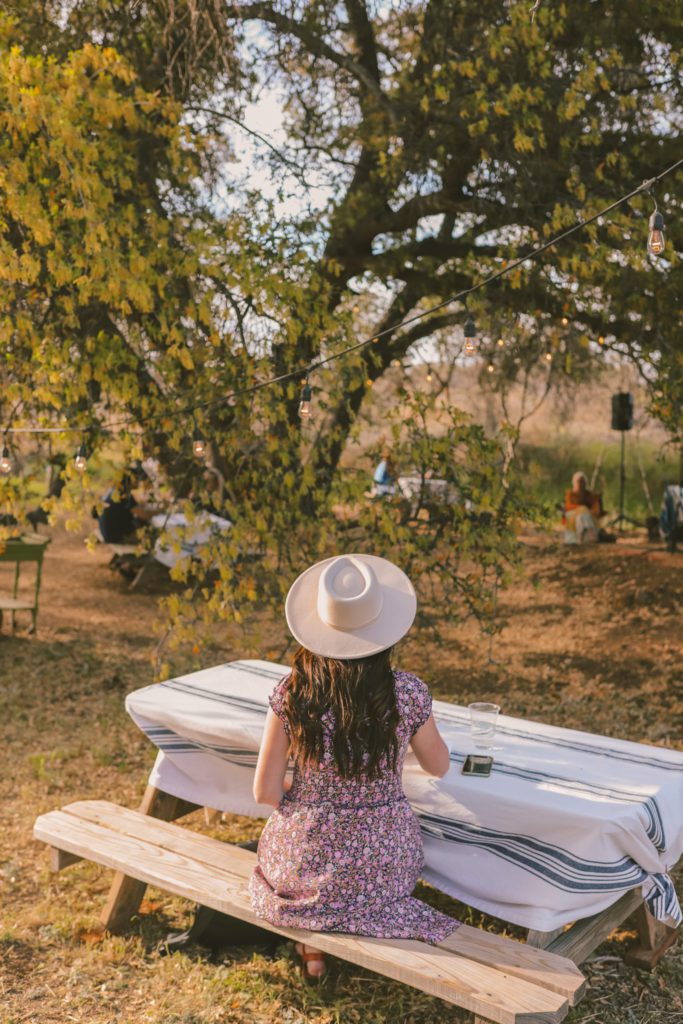
They also have tables scattered throughout the lavender fields.
Keep in mind that lavender is an acquired taste, so I would recommend the dinner only if you like it. I enjoyed the food, but the smell made my husband feel like he was eating soap.
8. Visit the historic San Xavier del Bac Mission
The San Xavier del Bac Mission is a national historic landmark that is located on the outskirts of Tucson on the Tohono O’odham Indian Reservation.
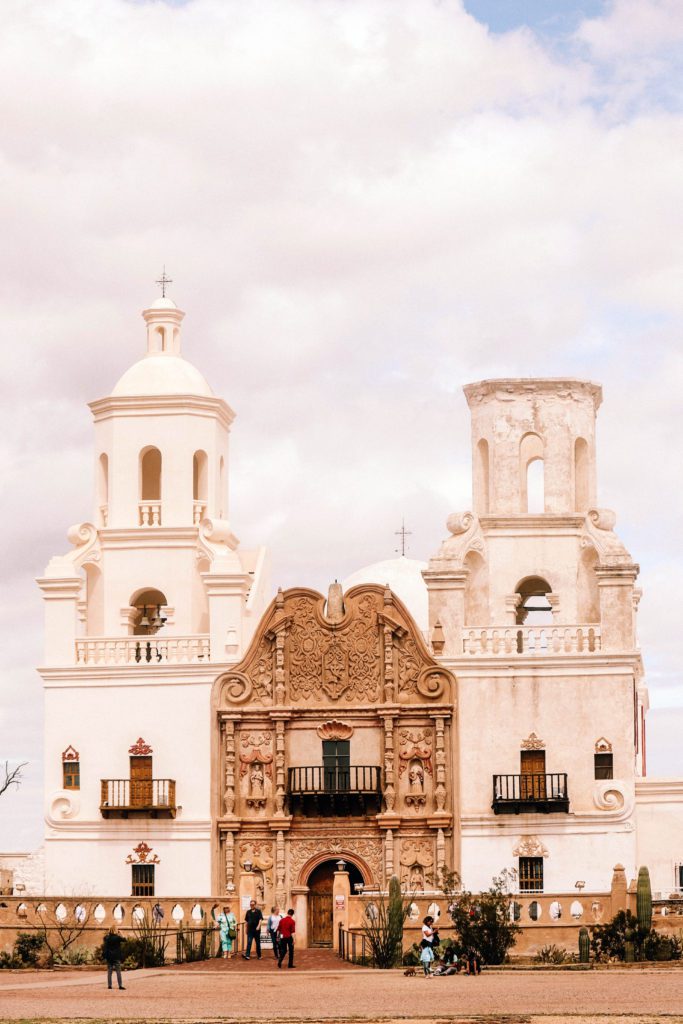
The church was constructed in 1783-1797 and is considered the oldest intact European structure in Arizona.
This beautifully preserved Spanish colonial mission has been nicknamed the “White Dove of the Desert”. It showcases stunning Baroque architecture and impressive religious art dating back to the 18th century.

Free walking tours are offered throughout the day by volunteers. Visitors are also welcome to walk around and explore the church and grounds on their own.
Just keep in mind that the church serves as the local parish for the Tohono O’odham so be respectful of mass times.
There is a small museum with religious artifacts on display as well as a 25-minute film for visitors to watch.
Be sure to stop at the fry bread stand to enjoy sweet or savory homemade Indian fry bread. It is insanely delicious!
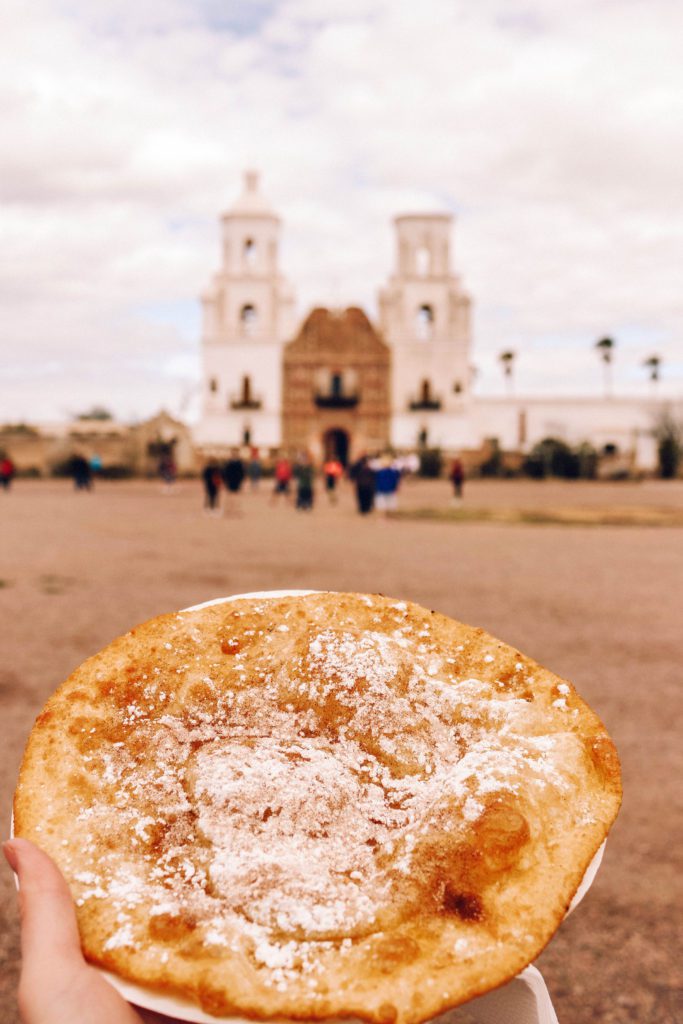
The hours of operation are not posted and when we visited they only took cash.
The Mission Church is open daily from 7 am-5 pm daily. The museum is open from 8 am-4:30 pm. Admission is free but donations are greatly appreciated.
9. Visit the obscure Biosphere 2
If you’ve ever seen the 1996 Pauly Shore movie Bio-Dome, then Biosphere 2 might seem a little familiar to you.
The movie was loosely based on this $150 million dollar science experiment.
This 3-acre facility was originally constructed between 1987-1991 in an effort to determine if a self-sustained controlled ecological system could be used to support human life in outer space.
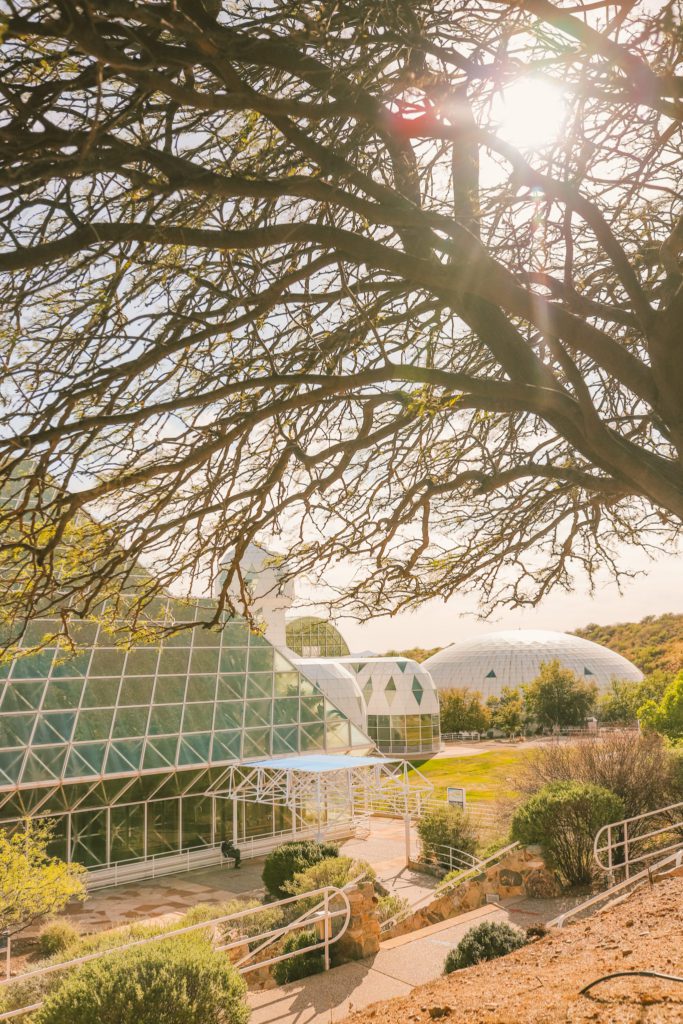
In 1991, eight people embarked on this two-year experiment.
They were sealed inside the Biosphere 2 where they maintained a self-sustained lifestyle utilizing the 1,000 species of plants and animals within the dome.

The experiment ended up failing, but beneficial information was learned along the way.
Several other experiments ran throughout the years until 2007 when the University of Arizona took over and began running it as an earth science research facility.
Today, Biosphere 2 is still considered one of the largest greenhouses in the world and the world’s largest living science center.
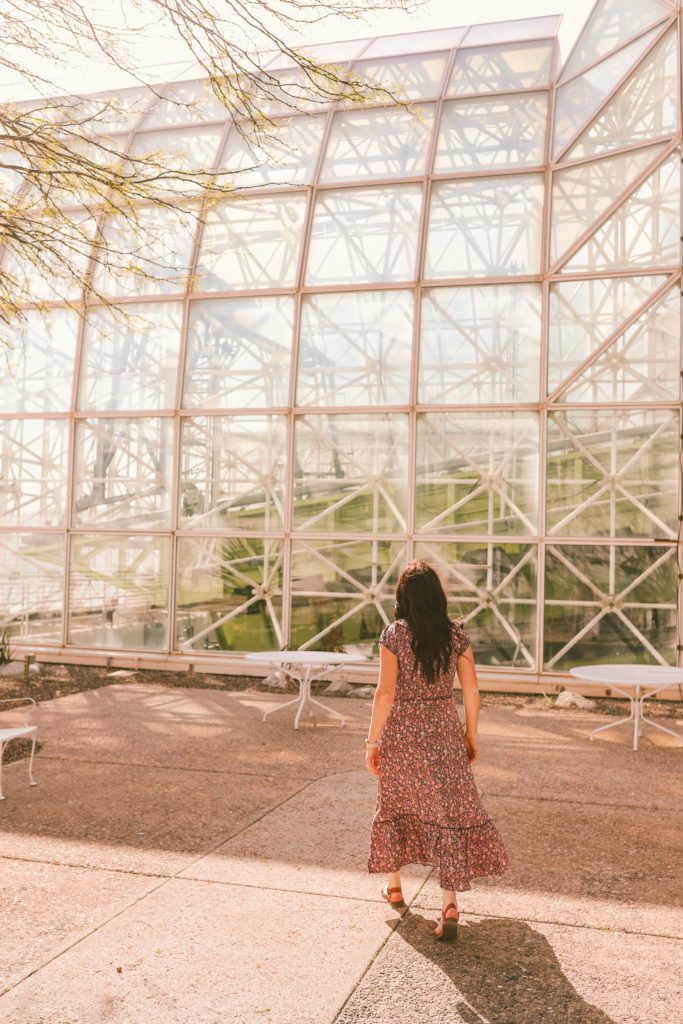
Visitors can take a self-guided audio tour through the seven biomes: a rainforest, an ocean with a coral reef, mangrove wetlands, savannah grassland, a fog desert, an agricultural system, and human habitat.
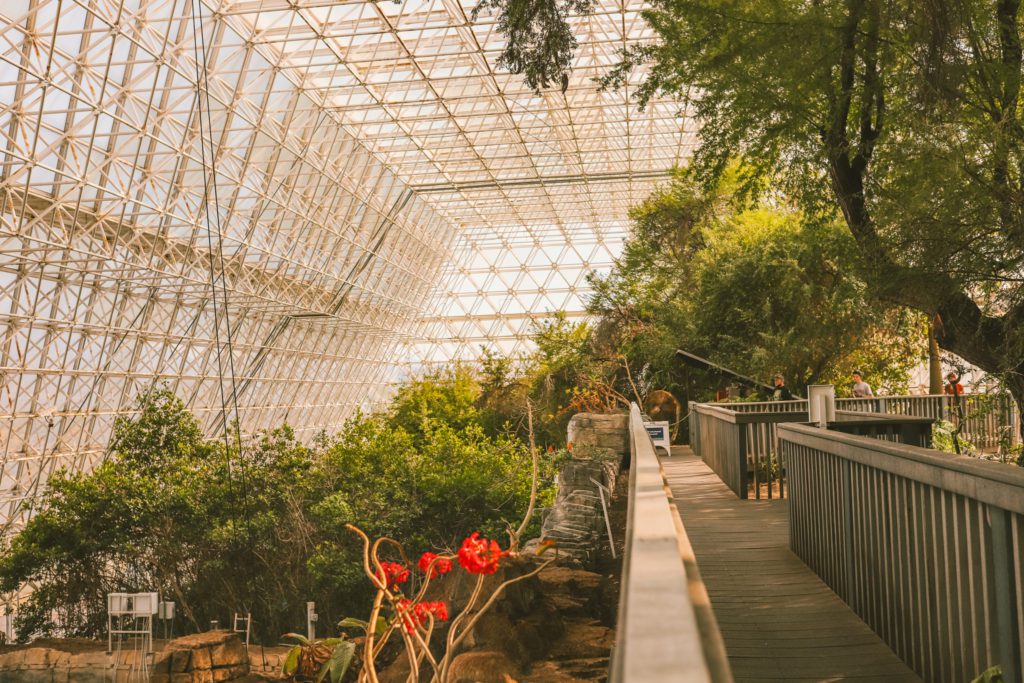
For more details about what to expect on the tour, see our guide Biosphere 2: Tour a Mini Earth in the Arizona Desert.
10. See the planes at the Pima Air and Space Museum
The Pima Air and Space Museum is one of the world’s largest aviation museums.
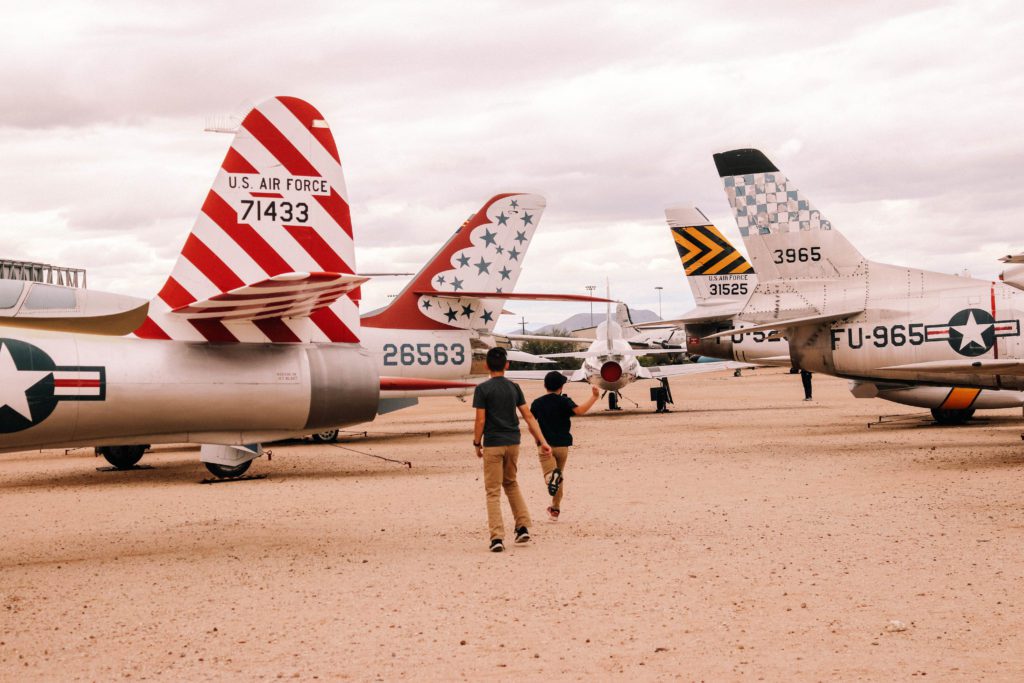
It is spread across 80 acres and houses over 350 aircraft, ranging from vintage planes to iconic military jets.
They have everything from the world’s smallest aircraft to the jumbo 787 Dreamliner, and everything in between.
Visitors can roam around the grounds to explore the aircraft and immerse themselves in the history of flight through the many exhibits.
A few of the planes are even open for visitors to climb aboard and explore.
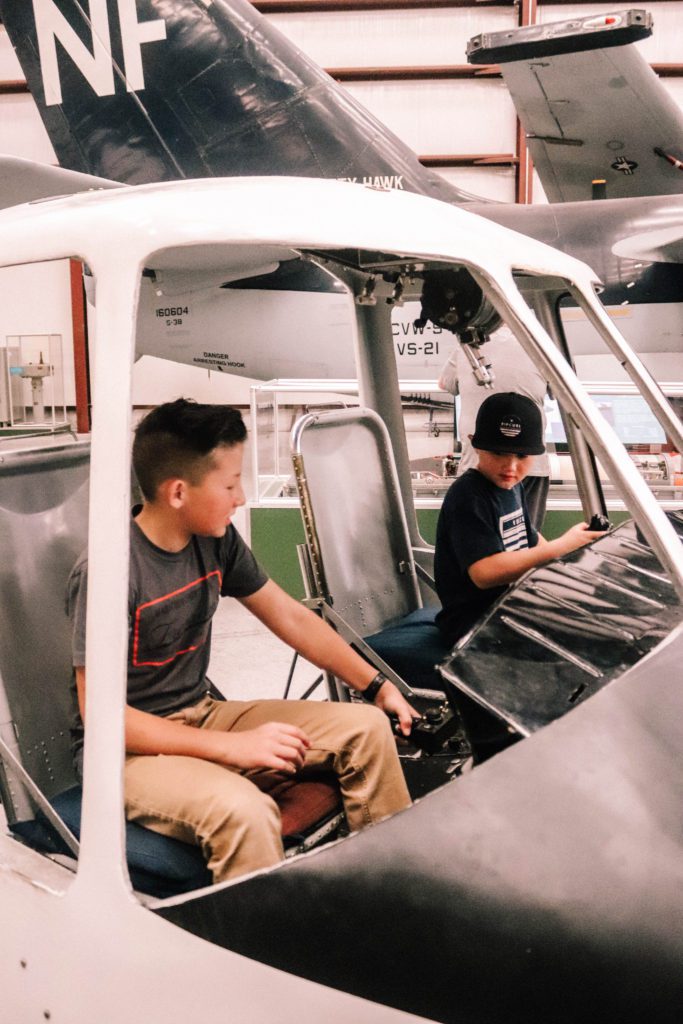
There is also an option to purchase a 45-minute narrated tram tour. The tram will take you around the grounds while the guide shares interesting stories and the history of each plane.
Tickets can be purchased in advance and are available on a first-come first-serve basis.
Tours used to be available to visit the visitBoneyard which consists of over 4000 decommissioned aircraft spread across 2400 acres.
However, the tours have been permanently discontinued due to updated security changes with the US Airforce.
Visiting the Pima Air and Space Museum is one of our favorite things to do in Tucson with kids. For more recommendations, see our guide 8 Fun Things to Do in Tucson with Kids.
A few more of the best things to do in Tucson:
- Reid Park Zoo: Kids and adults alike will love this zoo! It is a smaller zoo where you can get up close with the animals and it is also much more affordable than bigger zoos.
- Old Tucson: Old Tucson is a western-themed entertainment venue featuring rides, demonstrations, and activities.
- Kartchner Caverns State Park: This park features 2.4 miles of underground passages. Take a guided tour through a portion of the cave system to learn more about the history and see the fragile formations.
- Mount Lemmon: Try winter skiing at Mount Lemmon, or escape the summer heat and enjoy hiking, rock climbing, camping or taking the scenic Sky Ride.
- Seven Falls Trail: The 6.8-mile Seven Falls via Bear Canyon Road Trail in Sabino Canyon leads to beautiful series of cascading waterfalls. The best time to visit is in early spring during the snow run-off.
- Day trips: Take a day trip to Tombstone or Bisbee to explore some of the coolest ghost towns in Arizona.
- Agua Caliente Regional Park: This tropical oasis is a favorite among locals. The underground spring feeds into a small pond filled with fish and turtles and lined with palm trees. There is also a historic ranch house, nature shop, and art gallery.
- Titan Missile Museum: Step back in time to the Cold War as you visit this preserved Titan II Missile site. Visitors will take a one-hour guided tour of the underground missile complex and launch site. Reservations are required for all tours.
- Apple Annie’s Farm: Spend a day at Apple Annie’s Farm in Wilcox, about an hour from Tucson. Pick fresh fruit and produce and visit the country store for farm-fresh baked goodies. In the Fall they offer pick-your-own pumpkins from the patch.
- Ghost Town Trail: Drive the 30-mile Ghost Town Trail to explore three different nearby ghost towns.
- Southern Arizona Transportation Museum: Visit this free railway museum and train depot where you can view an old steam locomotive and other exhibits.
- Arizona Zipline Adventures: Take a Zipline Adventure across 5 different lines.
- Peppersauce Cave: If you aren’t prone to claustrophobia, then you’ll love exploring the extensive narrow passageways in this cave.
- Catalina State Park: Catalina State Park sits at the base of the Catalina Mountains, part of the Sky Islands Region. Here you’ll find desert hiking trails, the ancient Romero Ruins, and a variety of wildlife. You can also cool off in the Sutherland Wash.
- Madera Canyon: Discover the secret waterfall in Madera Canyon.
- Rooster Cogburn Ostrich Ranch: This unique ranch offers critter feeding, a stingray bay, a 45-minute narrated tour of the ranch and surrounding desert, and $10 monster truck tours on weekends.
- Kitt Peak National Observatory: Come take a day or night star tour at the Kitt Peak Observatory.
- Museums: Tucson offers several museums that are great for kids, including the Children’s Museum of Tucson, the Museum of Miniatures, the International Wildlife Museum, and the Arizona State Museum.
- Casa Grande Ruins: If you’re coming from Phoenix, make pit stop at the Casa Grande Ruins to explore ancient Native American ruins.
- Oracle state park: Explore this 4,000-acre wildlife refuge and international dark sky park. Take the Nature Loop or Mariposa Trail in the spring to see wildflowers. The historic Kannally Ranch house is also open for self-guided tours.
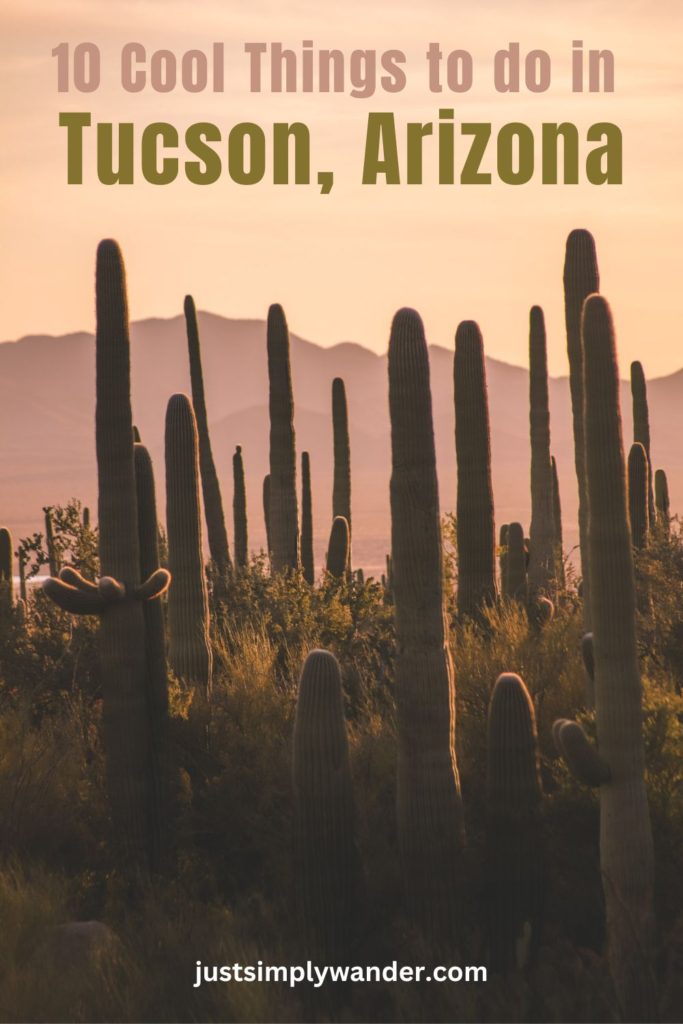

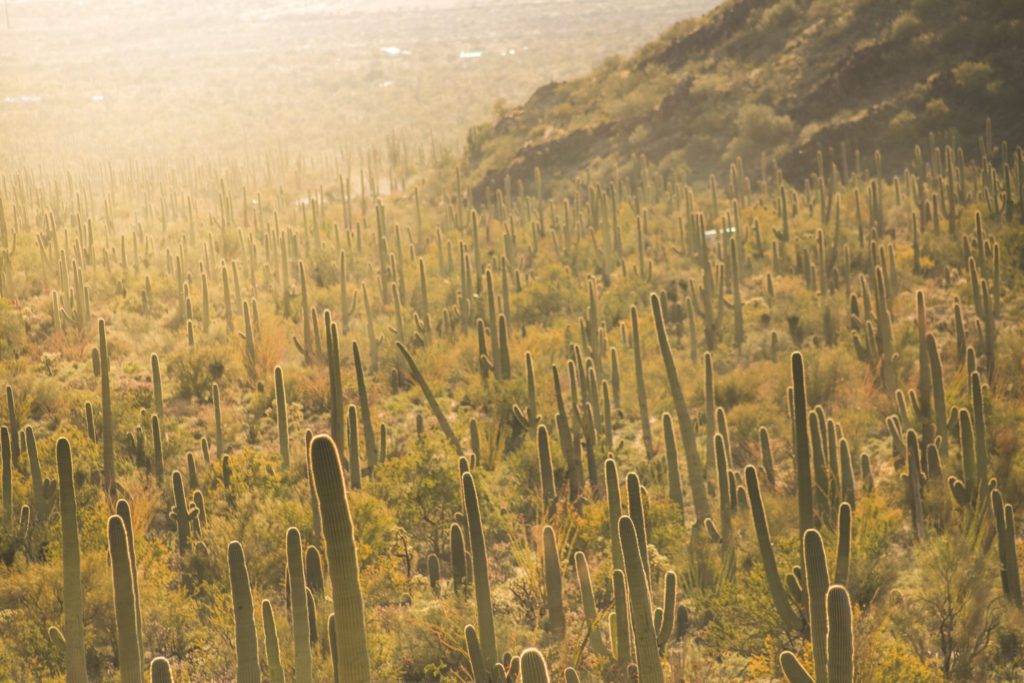
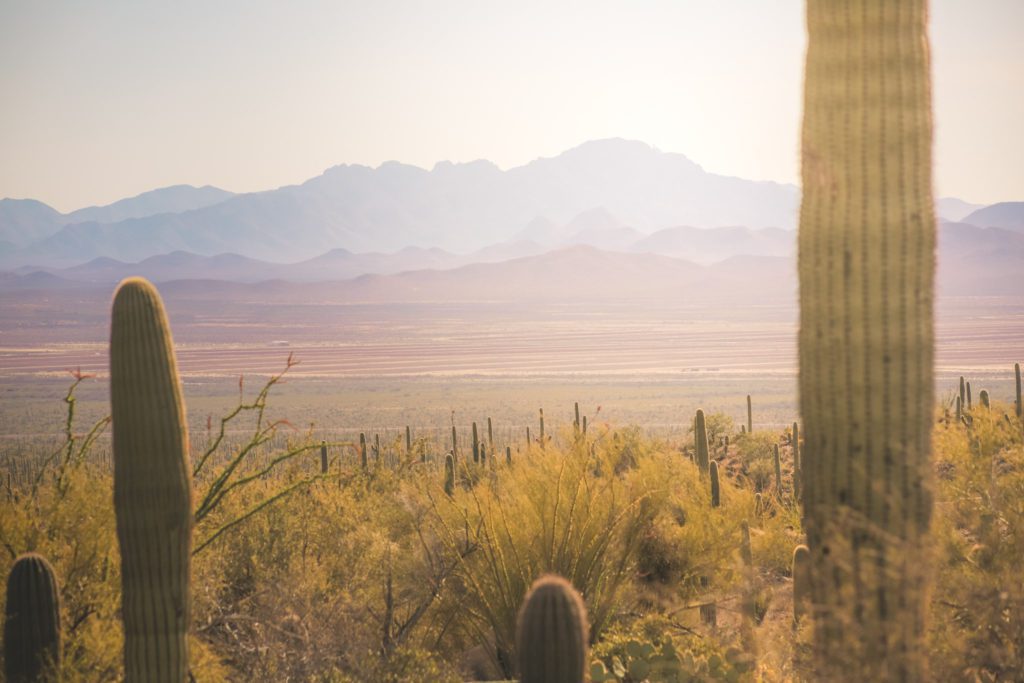
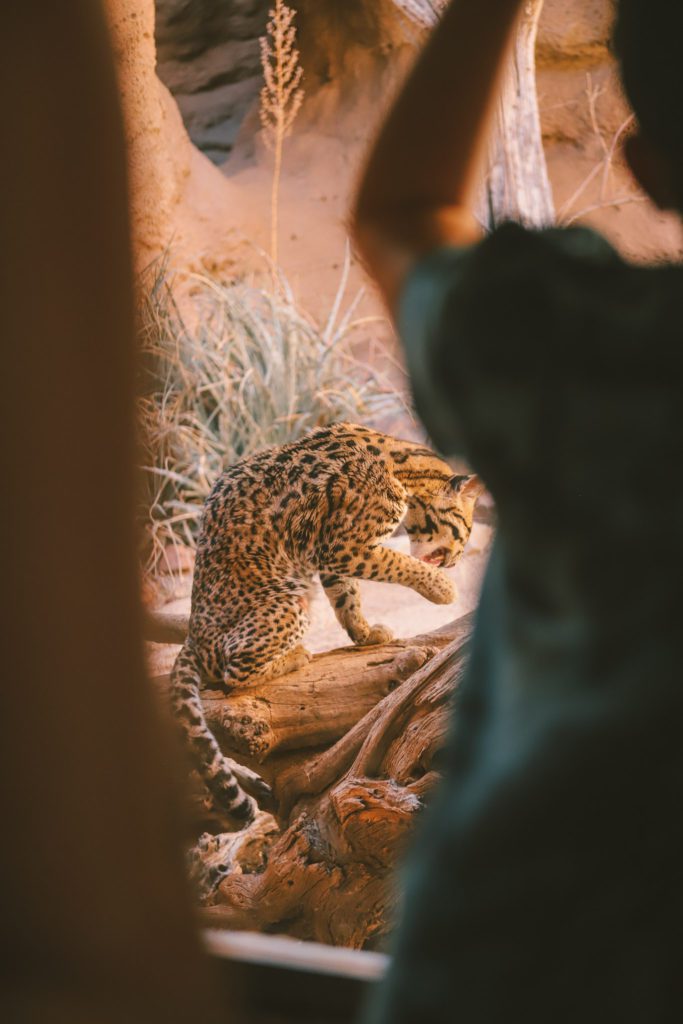
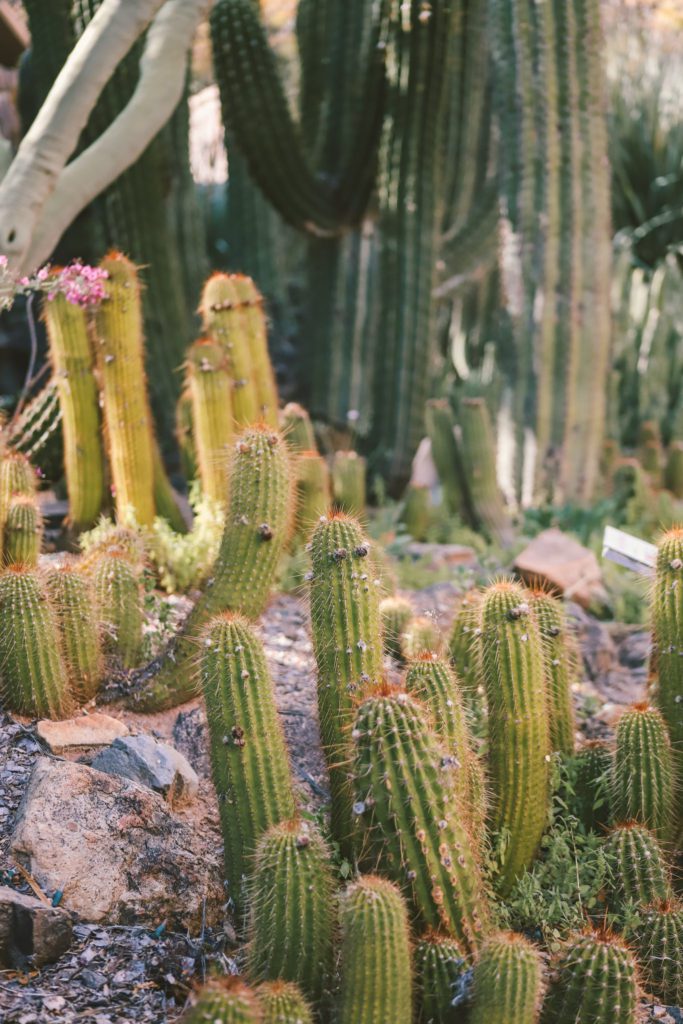

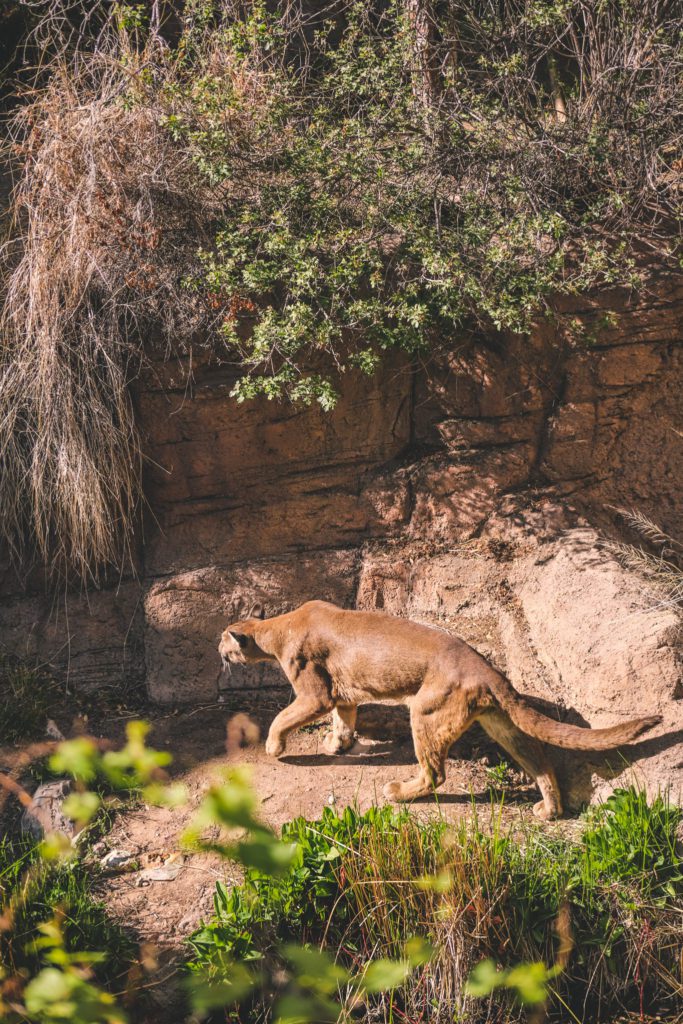
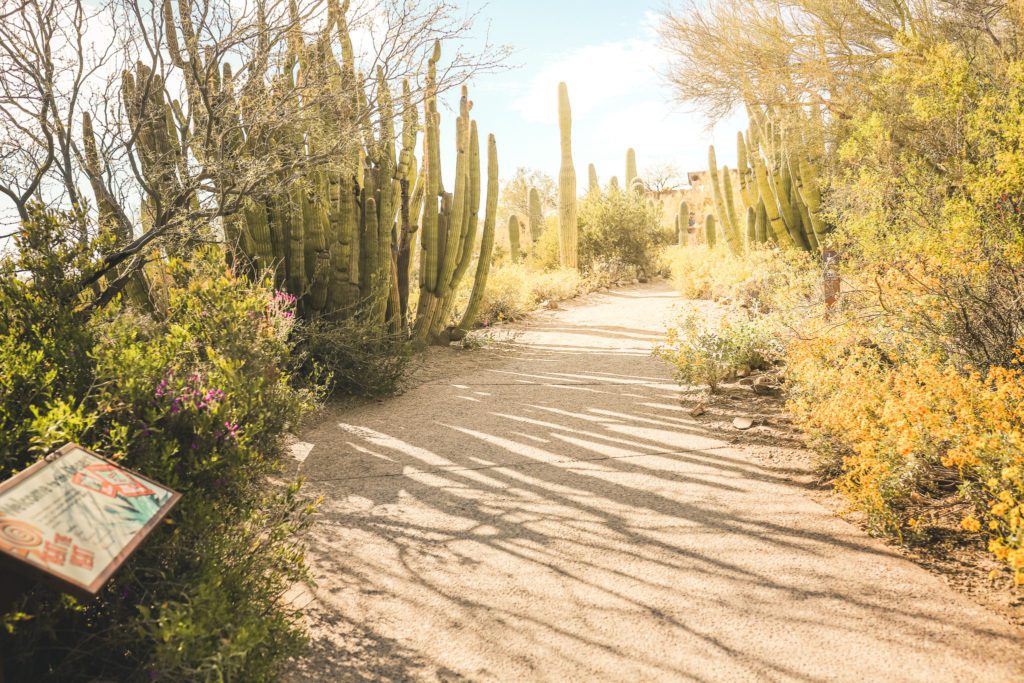
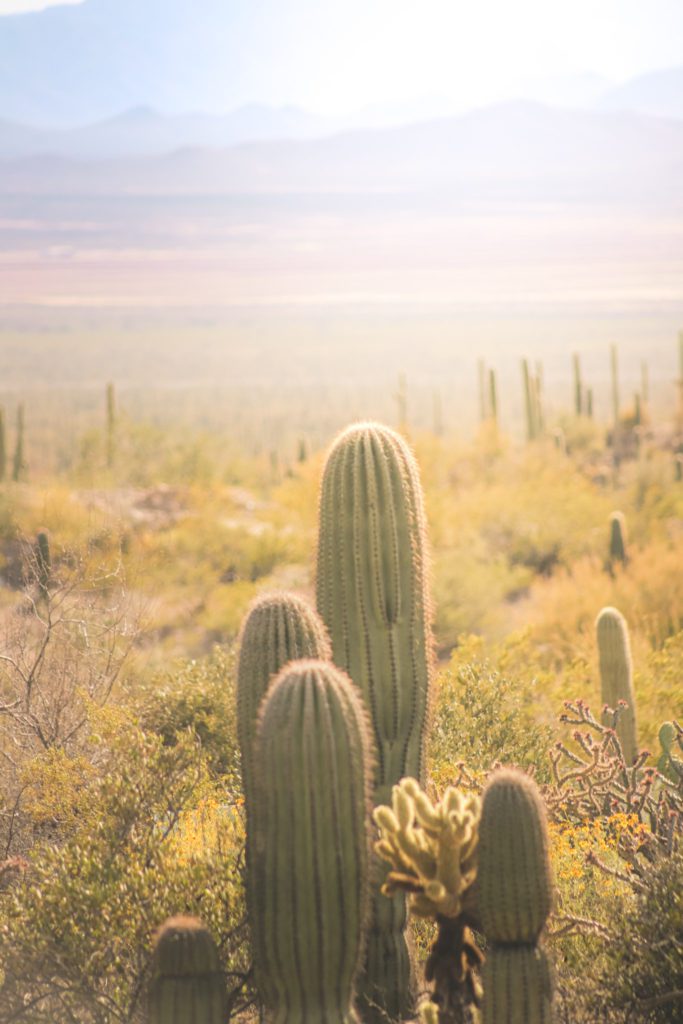

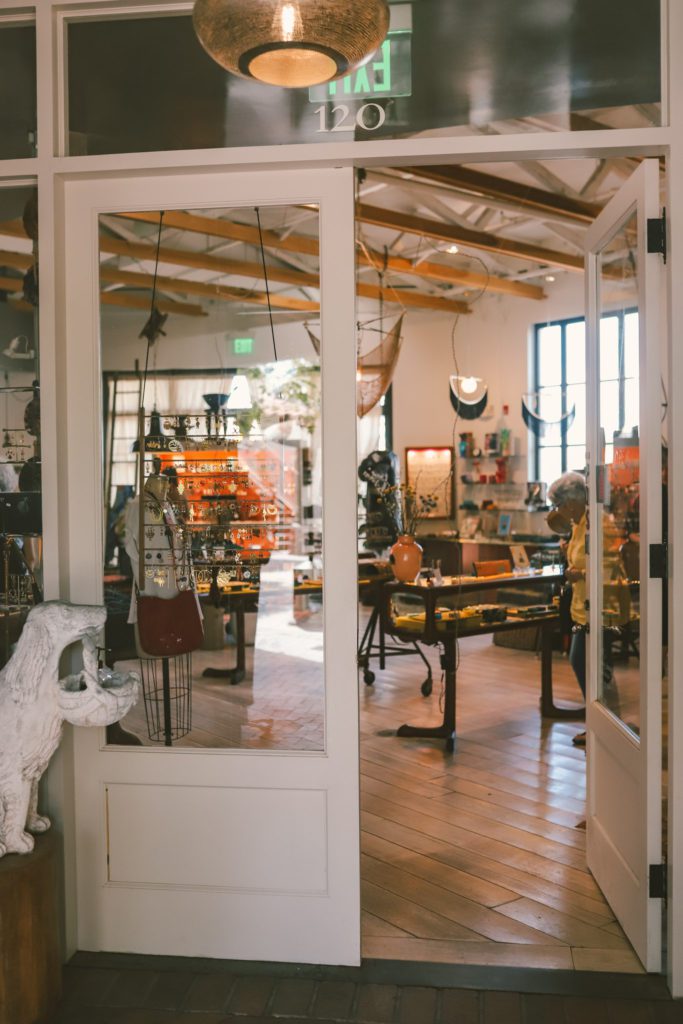
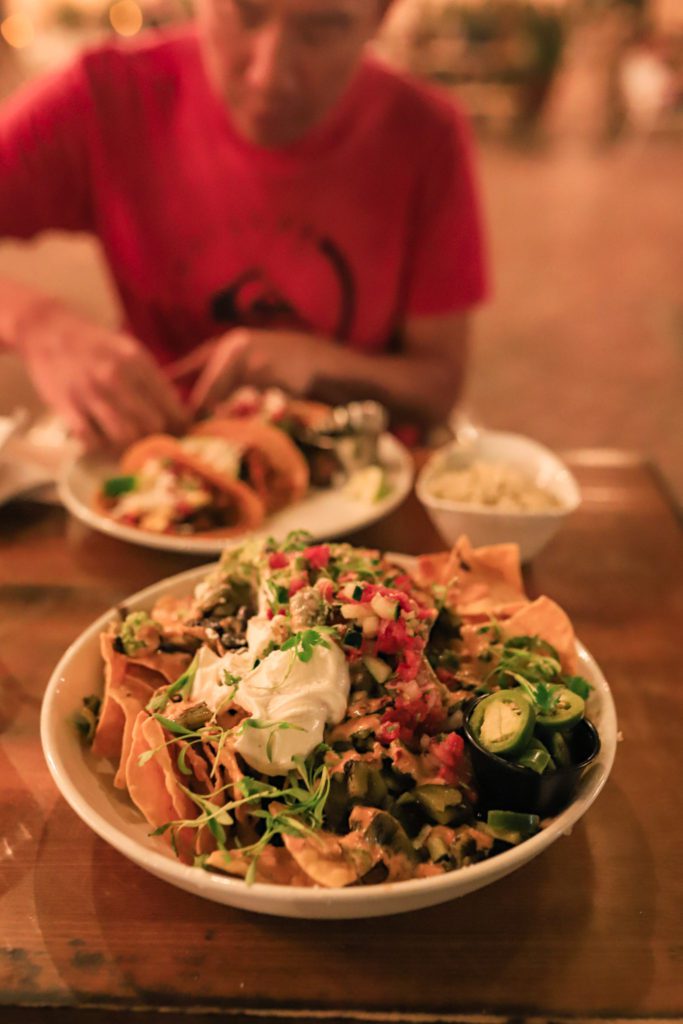


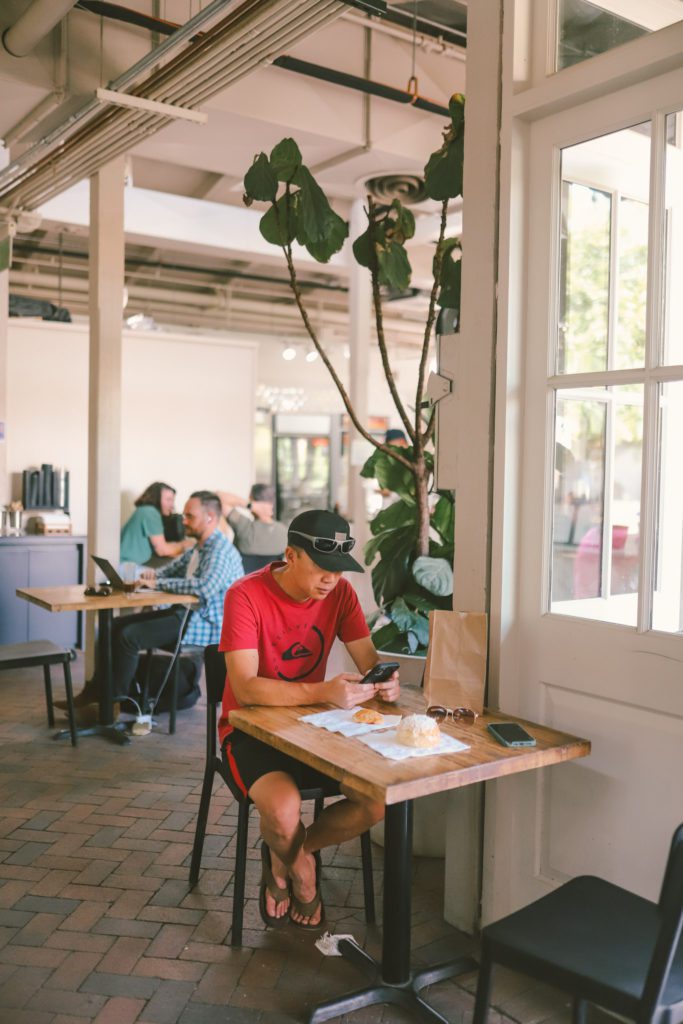


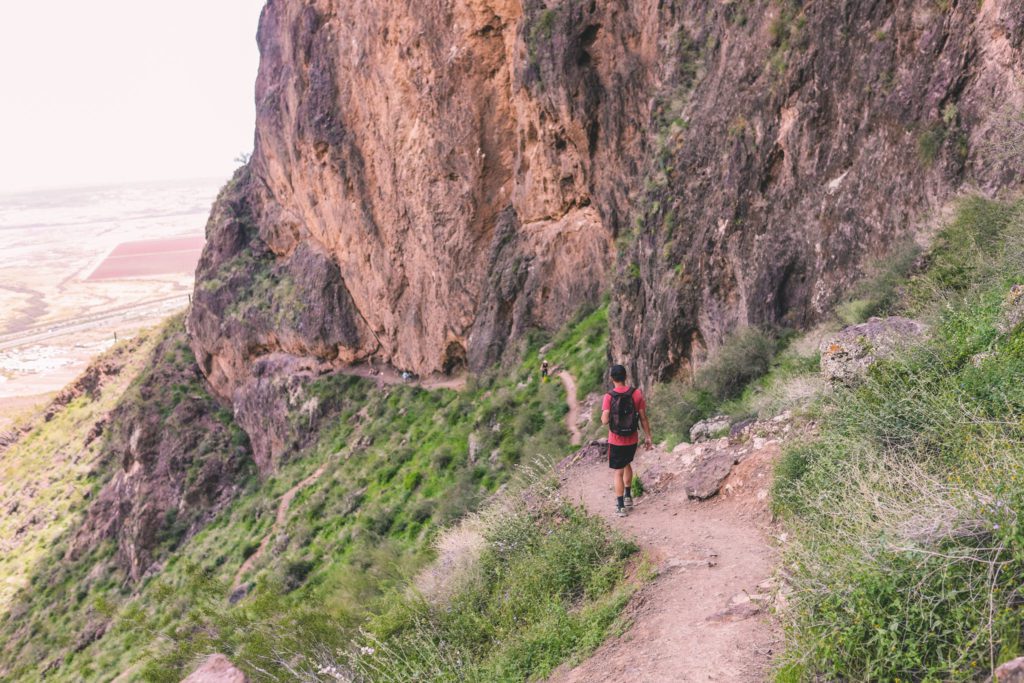
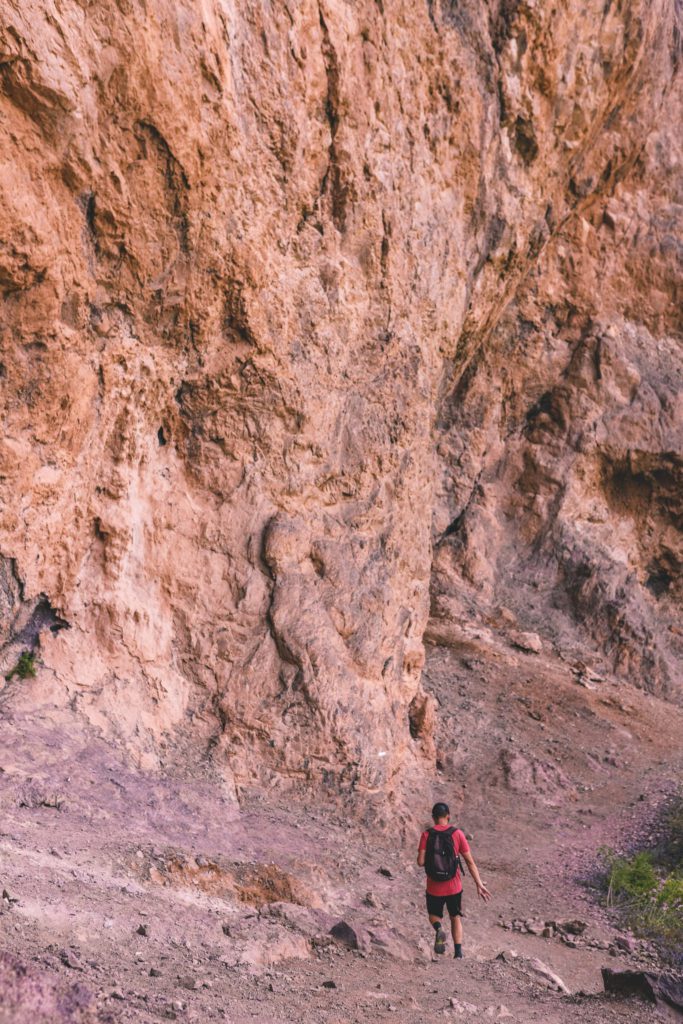
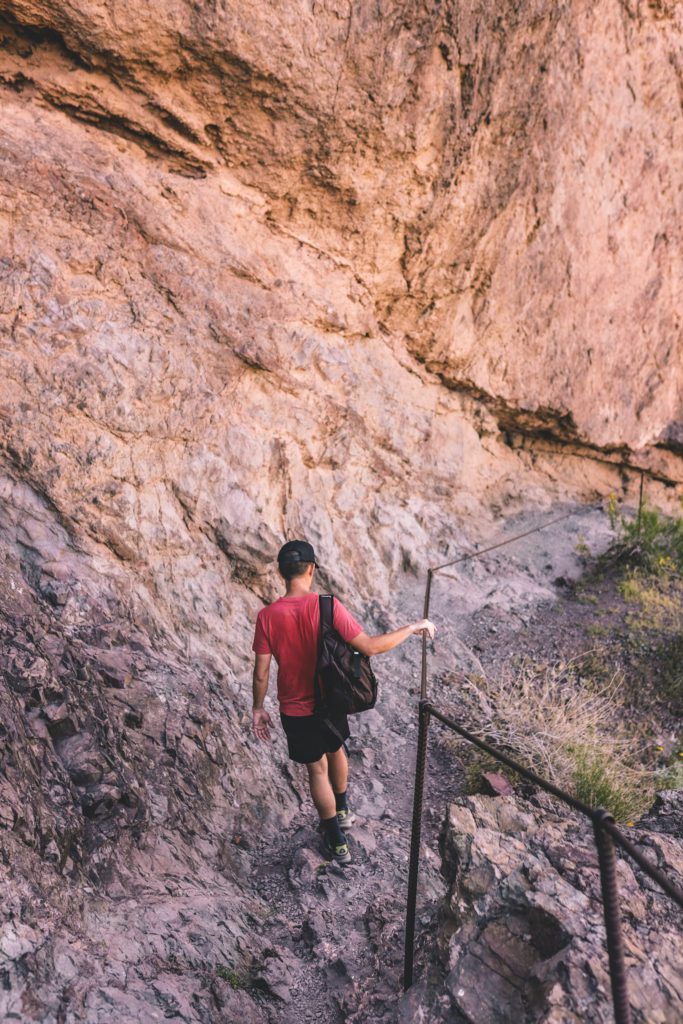
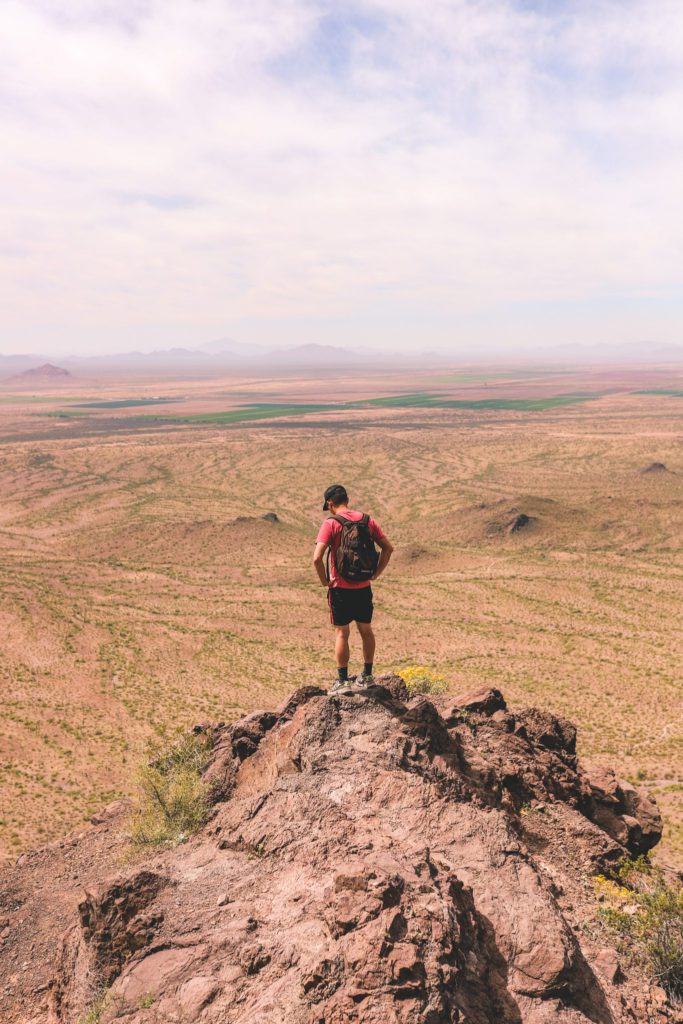
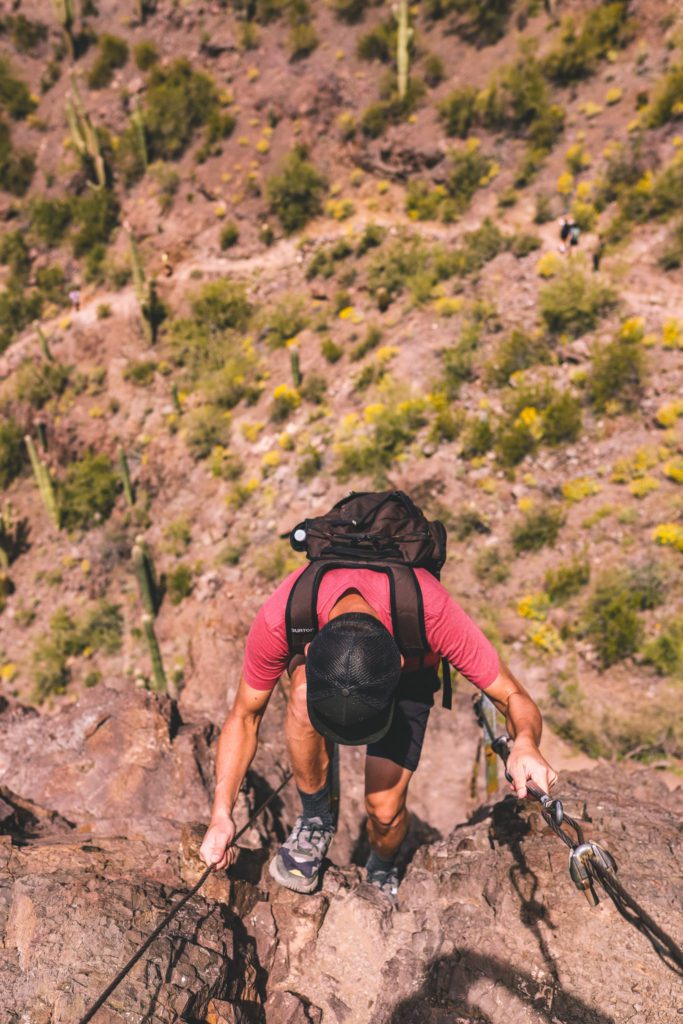


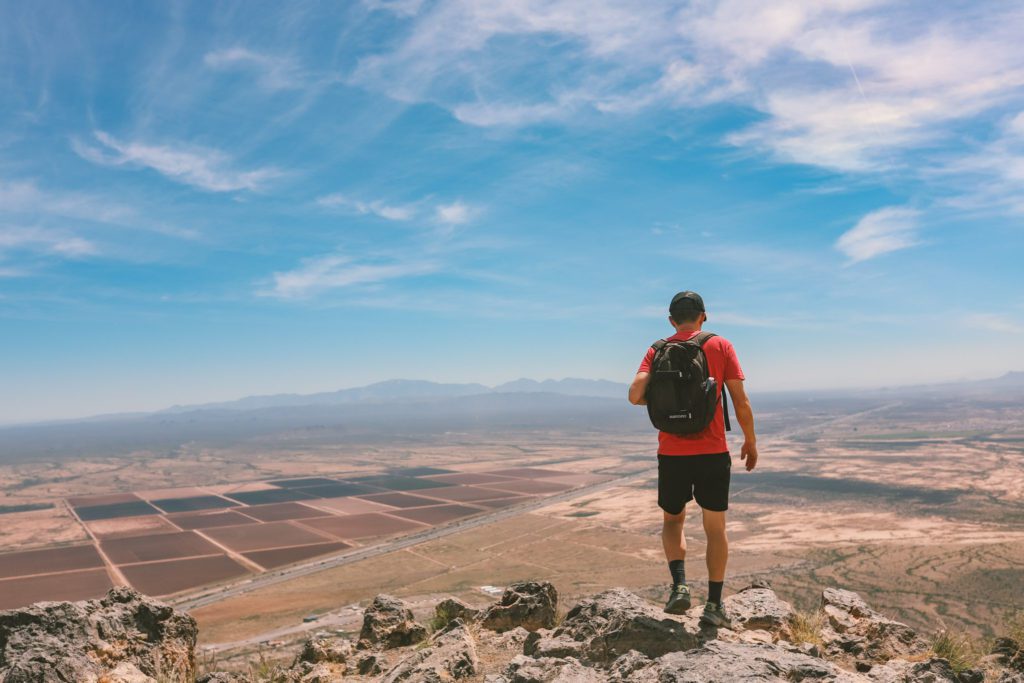
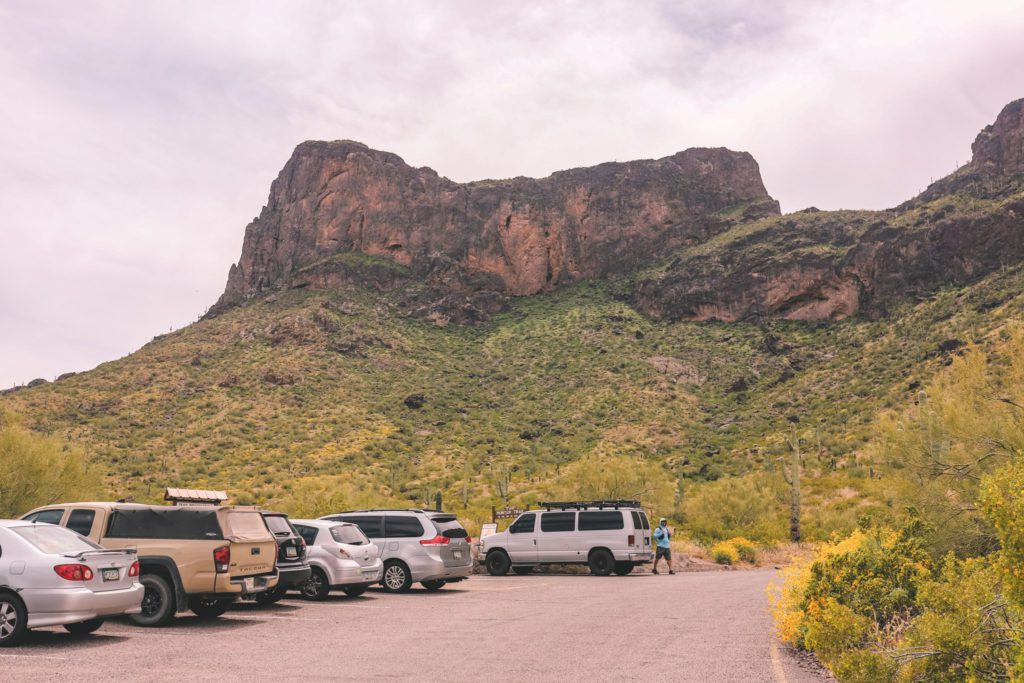

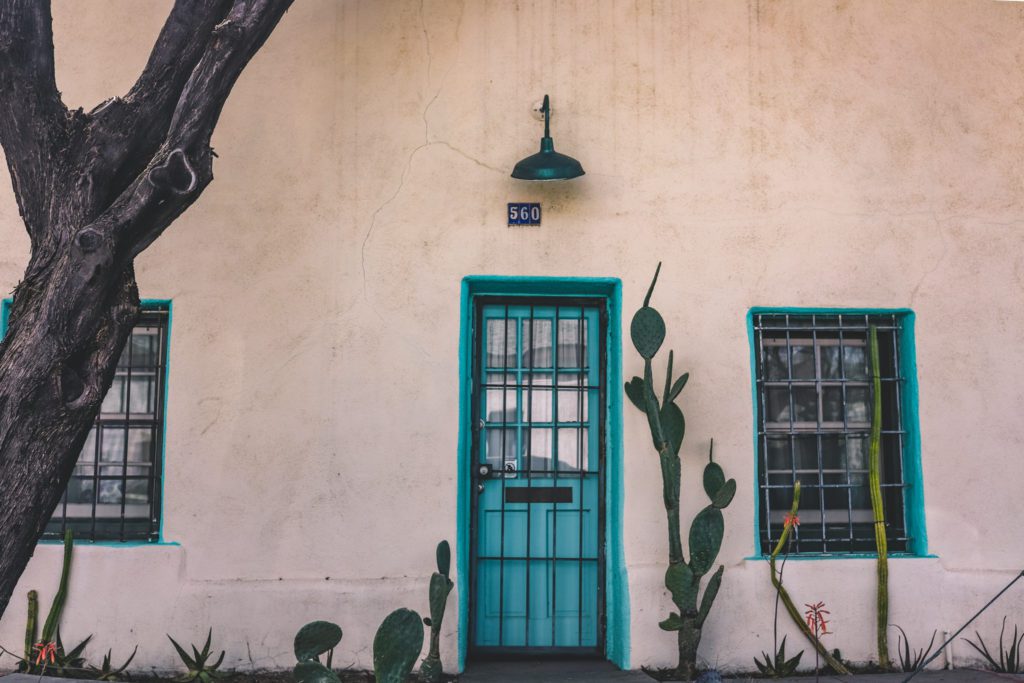
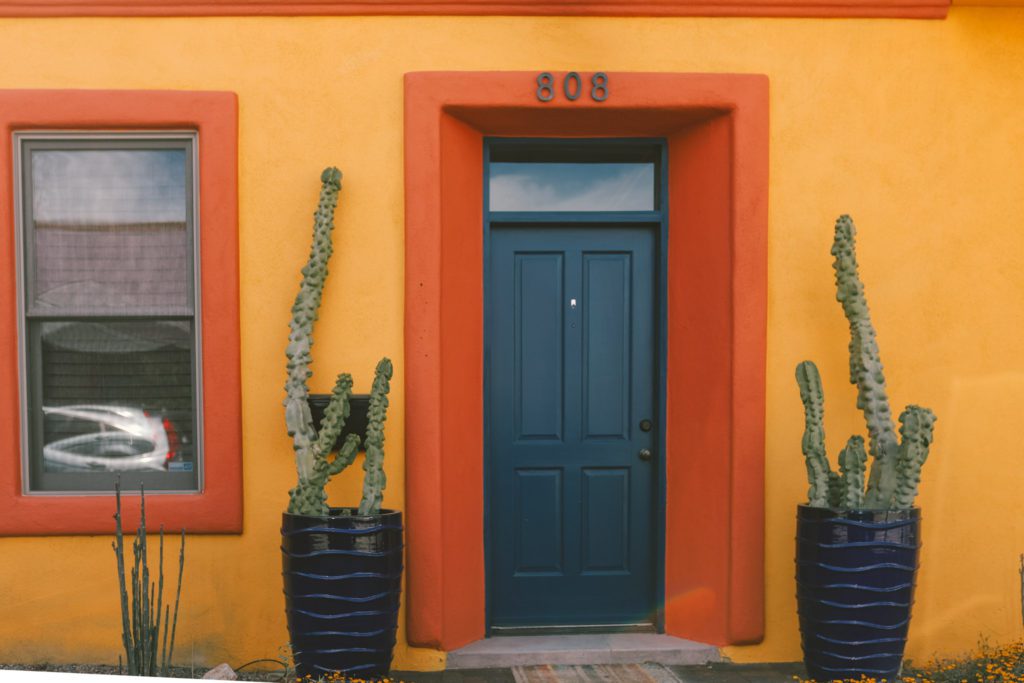
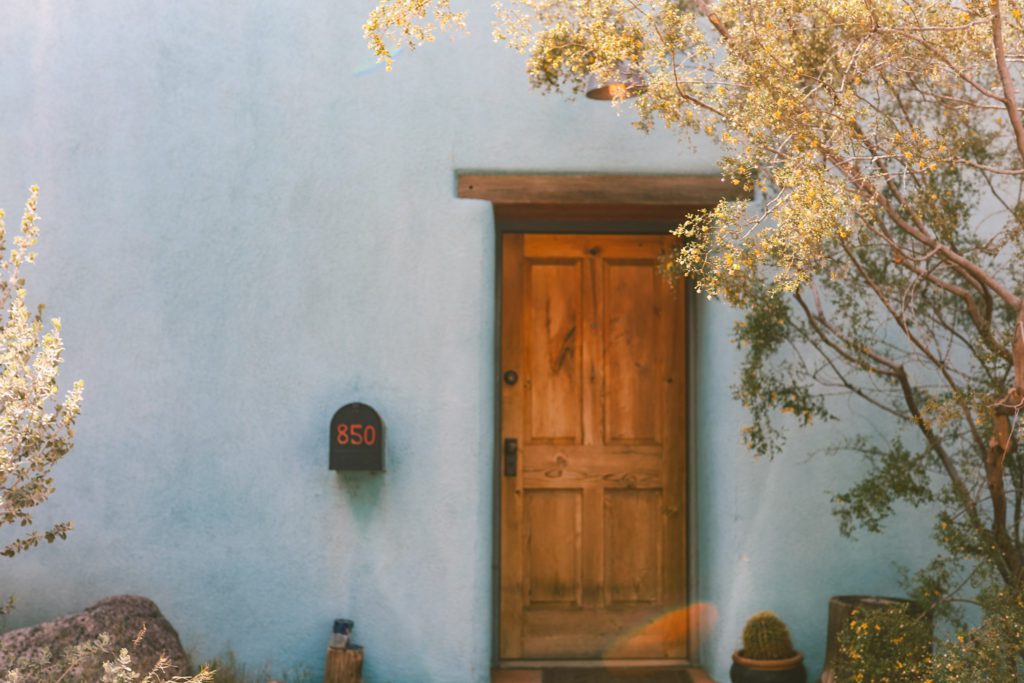
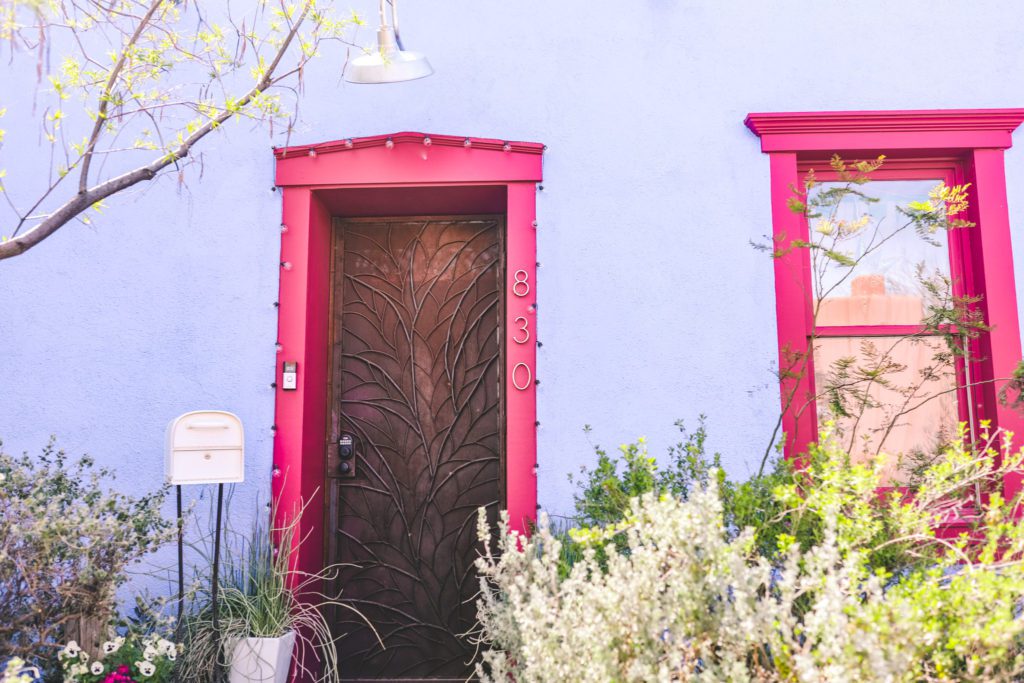


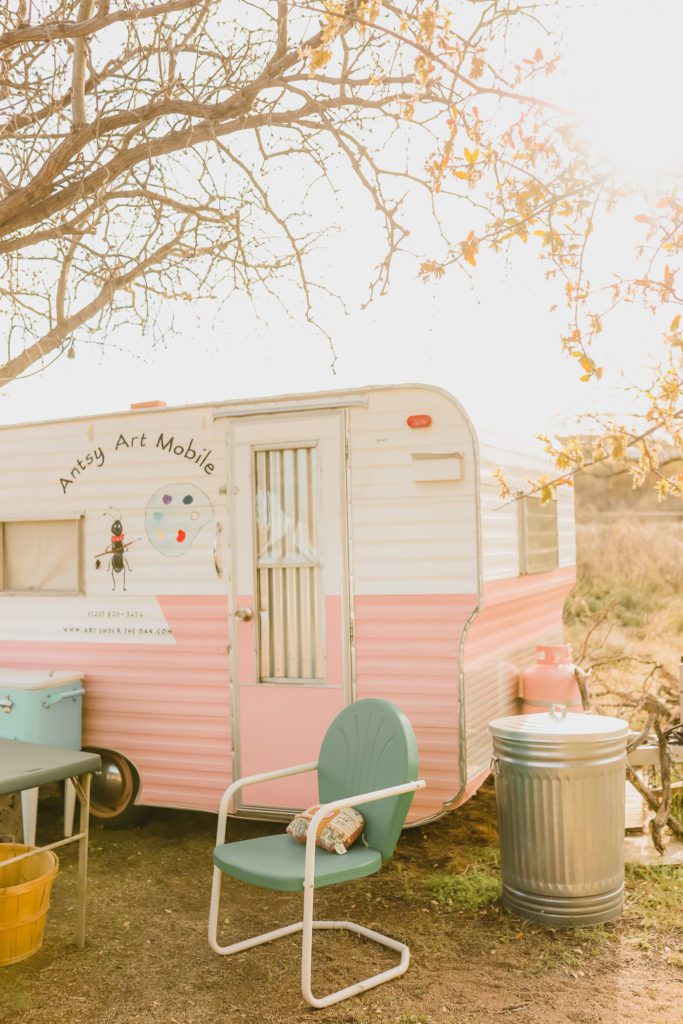
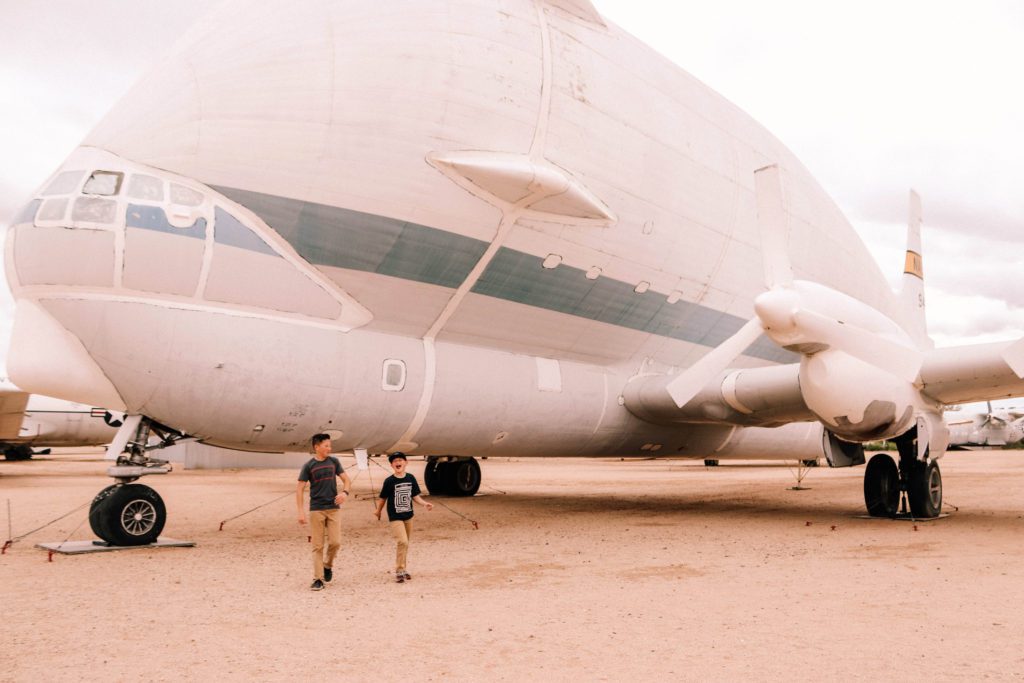

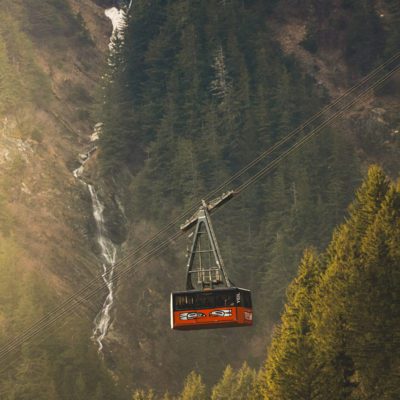
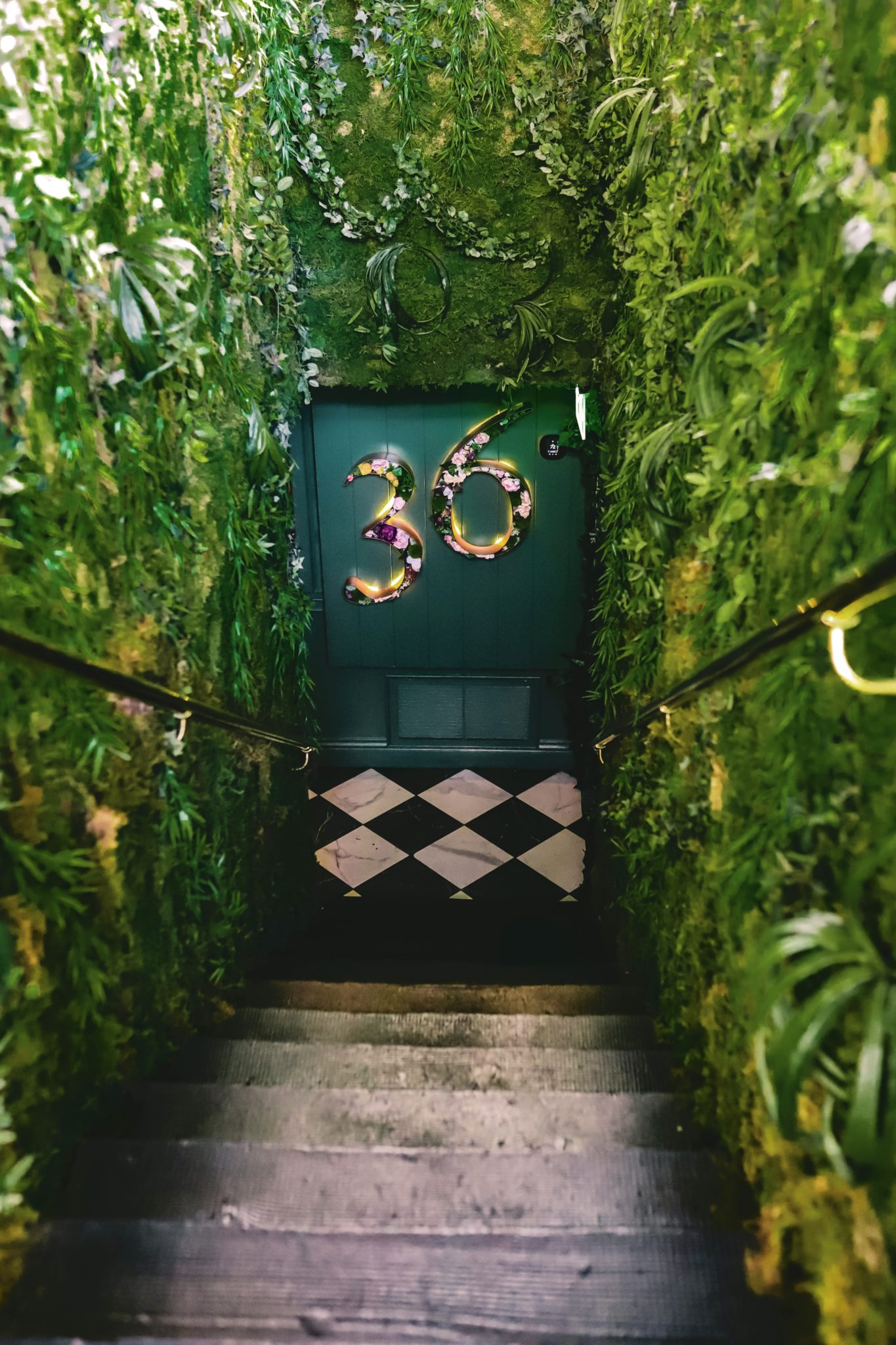
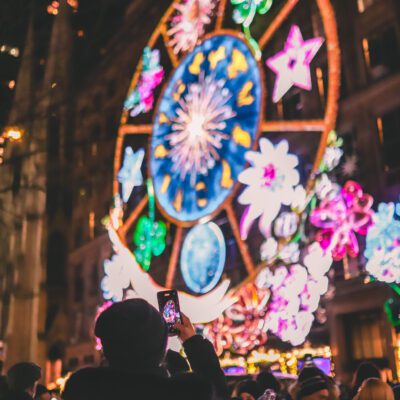
Leave a Reply